Your cart is currently empty.

Model One Voyager

Model One Classic
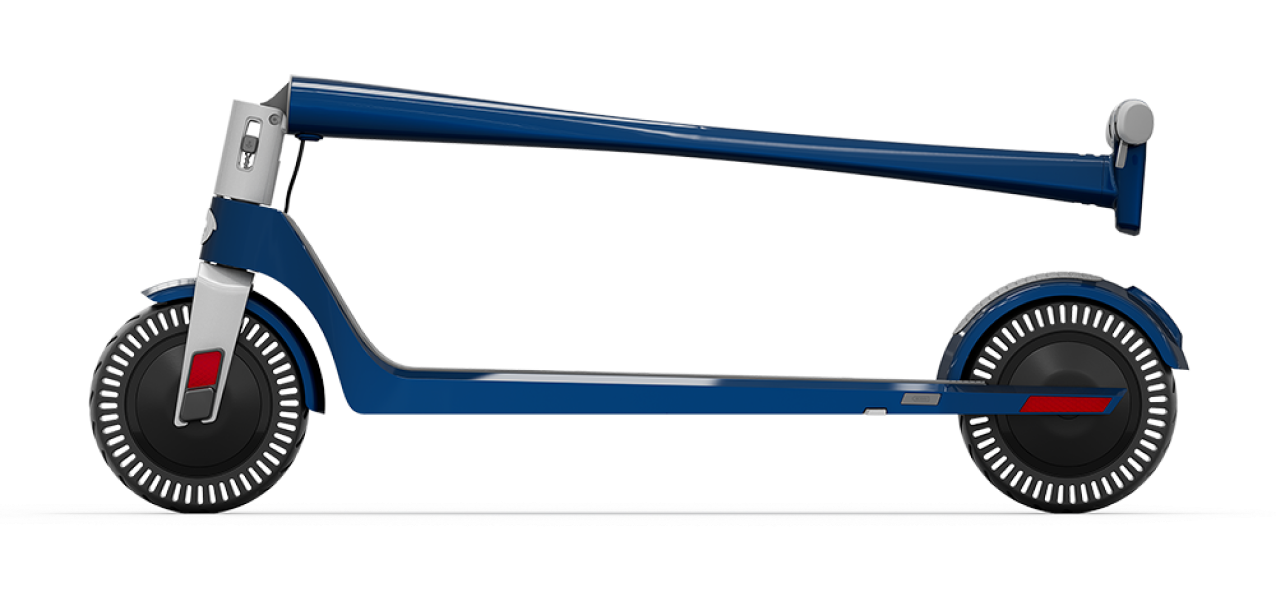
Accessories

When you join the Unagi family with an All-Access membership, you unlock more than just a world-class electric scooter; you gain a lifestyle upgrade that travels with you. Introducing White Glove Love—our commitment to ensure that wherever you go, your ride goes too.

Discover why I swapped my car for an Unagi Scooter! Dive into my journey from the monotony of traffic to the freedom of city streets, exploring the excitement, eco-friendliness, and simplicity of scooter life. Join the ride towards a more adventurous, sustainable urban lifestyle. Will you join me?

With White Glove Love, we go where you go. All-Access members who are traveling can get an Unagi electric scooter for use during their trip, delivered to their hotel or Airbnb, at no extra charge. Now available in 8 U.S. cities.

This article will delve into the essential certifications that electric scooters must obtain across different regions, shedding light on what each certification covers and why they are crucial for both manufacturers and riders.

In this ultimate buying guide ... we'll give you all you need to know about an e-scooter's weight limit, and how to ensure you find the ideal electric scooter for you and your riding needs.

This article breaks down Houston's ordinances regarding electric scooter use in Houston, highlighting age restrictions, divergences from the State law, best practices, and relevant traffic laws.
- For Business
Spring Cleaning Sale: Rent now and get your first month FREE! Don't miss out!
Double the Range & Half the Charge Time vs Classic
We’ve spent the last 3 years leveraging advancements in battery cell, motor controller and material science technology to create the ultimate, ultra lightweight portable electric scooter - without making trade-offs., "one click" folding scooter.
Press one button and the Unagi patented stainless steel hinge system folds and locks in one smooth, satisfying click. This engineering breakthrough makes it dramatically easier to fold and carry than every other scooter on the market. We know because we tested them.
Incredible Handlebar
The magnesium alloy handlebar is a feat of structural engineering that required more than thirty prototypes to perfect. Integrated in the top bar are the intuitive controls of the dashboard—throttle, brake, horn, and LED headlight. No visible wires. No bulky console. Just a sleek, integrated command center that connects the rider to the ride. Why Magnesium? It’s 33% lighter than aluminum, which partially explains why the Unagi is the most portable scooter on the market.
Tube of All Tubes
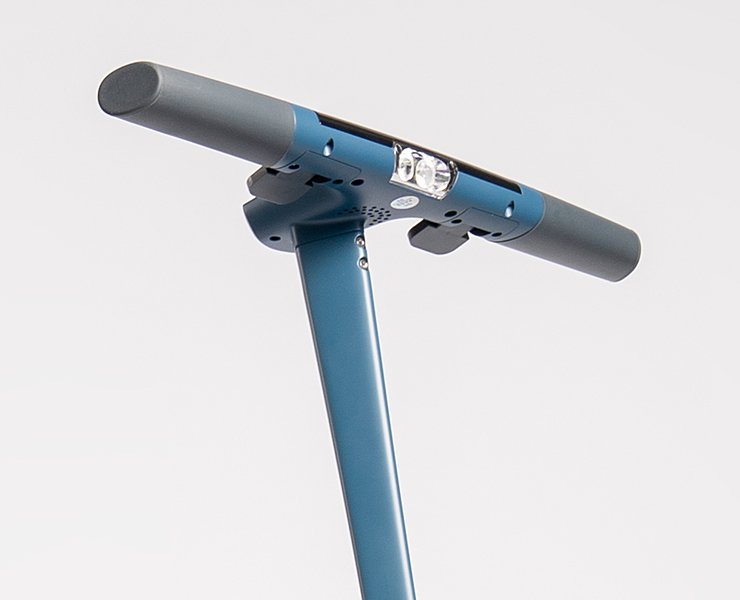
Unagi leverages TORAY carbon fiber from Japan to strike an unprecedented balance of lightweight and heavy-duty strength. The composite is anisotropic, a technical term meaning it’s laid down by hand in a painstaking process that optimizes strength by distributing layers of the fiber where it’s needed most. You don’t have to tell your friends that your scooter uses the same carbon fiber as Elon Musk’s Space-X rockets, but we can’t blame you if you did.
Great Range
Powered by state-of-the-art electric batteries and an exclusive custom-designed management system, the Voyager offers exceptional energy density and the shortest charging time in its class. We prioritize longevity and reliability, ensuring that our batteries will last for many years, even with continuous daily use. The Voyager's range is truly unparalleled, extending up to an incredible 25 miles, depending on ride mode, terrain, hill climb, and rider weight. This impressive feat sets the Model One Voyager apart, as no competitive scooter comes close to this range within its weight class. And impressively, it accomplishes this feat in half the charge time as our previous flagship, the Model One Classic. Experience the freedom and convenience of longer rides and less frequent charging with the Unagi Model One Voyager, a testament to our commitment to innovation, performance, and quality.
Serious Power
The Voyager boasts a specialized 250-watt motor in each wheel, delivering an impressive 500 watts on average and surging over 1000 watts at peak. With 32 newton meters of torque, you can conquer challenging hills and steep inclines. Our bespoke motors employ rare-earth neodymium magnets and a heat monitoring system for top-notch performance, efficiency, responsiveness, and durability. Unleash the power of the Voyager!
Custom Designed Tires
Flat tires? Please. Our 7.5” wheels are made of solid rubber and puncture proof, so they’ll never foil your morning commute. Our design team broke new ground on these tires. Notice the air pockets spread throughout the circumference of the wheel. These ingeniously act as a front and rear suspension system, providing the right amount of shock absorption that lets you still feel responsive balance and road feel.
Confident Braking
One gentle push on the ergonomically optimized lever and the dual electronic anti-lock brakes bring you to a safe, steady stop. Both on our accelerator and brakes, we’ve built variability into our controls so pushing down further increases their action. Additionally, the Model One also features an intuitive friction brake, allowing users to adjust their riding style to a more classic “foot braking” position at their pleasure.
Superior Deck
By combining a singular piece of machined aluminum with embedded silicon on the top surface for traction, the scooter deck achieves an ideal combination of rigidity and comfort. But what’s missing from this equation? The seams, joints, stitches, bulk, scratchy sandpaper grips, and harsh metal finish that comes standard with other scooters.
Uber-Kicking Kickstand

Our kickstand is a perfect example of our ruthless obsession with detail. Unlike all other scooters on the market whose generic kickstands come from a third-party vendor, the Unagi’s kickstand is designed from the ground up to seamlessly integrate with the deck. As a result, the stand is sturdy and simple and practically invisible when you’re riding.
Smartest Mobile App
Experience seamless urban travel with Unagi’s mobile app. Eliminate range anxiety by accurately calculating remaining range, customizing based on rider weight and terrain, and removing guesswork from your trip. Toggle top-speed settings, switch between single/dual-motor modes, and secure your e-scooter with remote lock/unlock. Manage subscriptions effortlessly, personalizing and optimizing your journey through our all-in-one app.
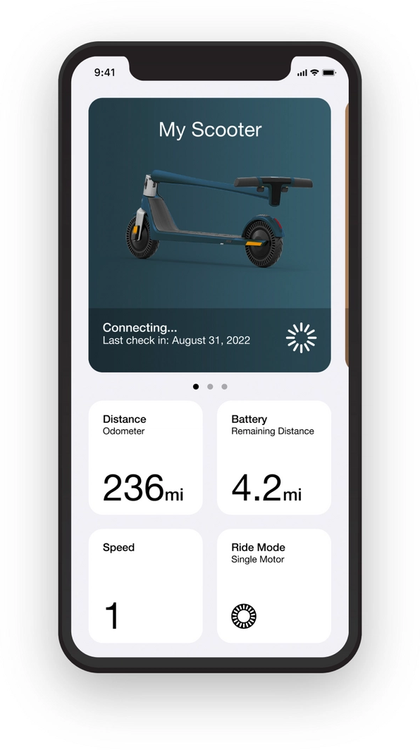
Download on App stores:
Voyager: by the numbers, maximum range, maximum speed, maximum power, 80% charge time.
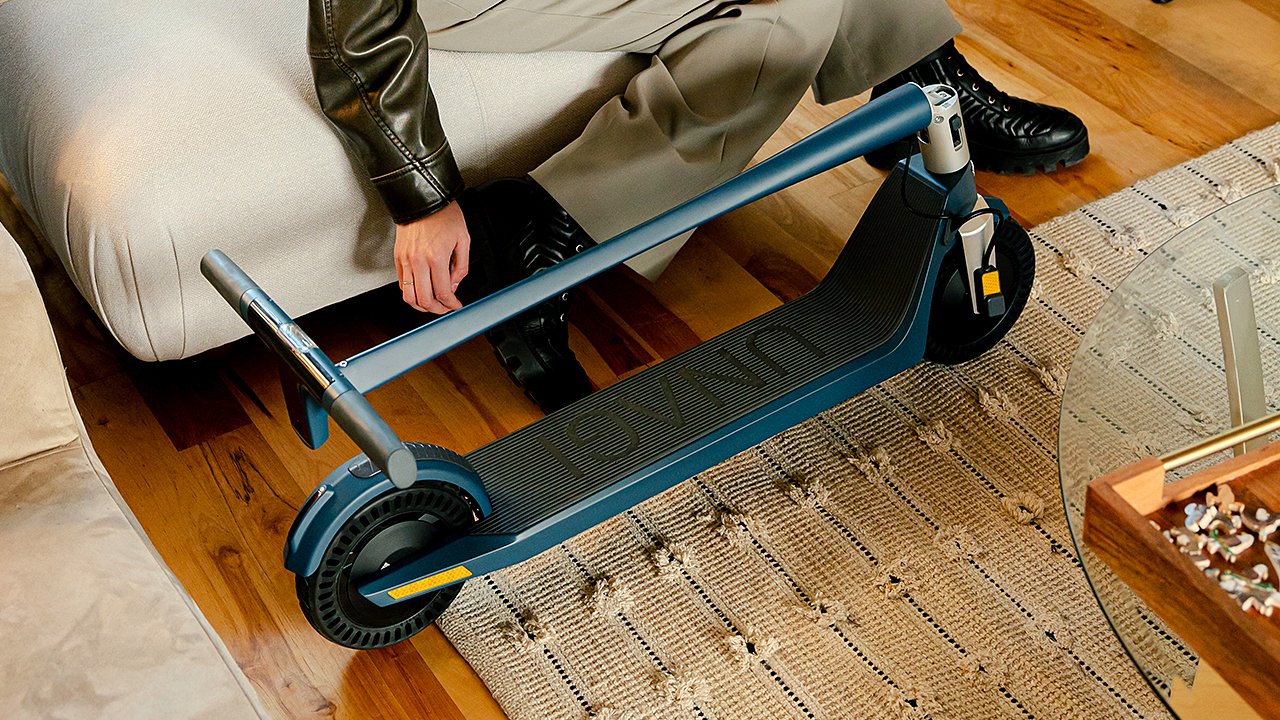
Compare Scooters

The scooter that put Unagi on the map and changed the game for portable urban commuting. Now renamed our “Classic”, our 2023 model has been updated for improved reliability.
$990.00 MSRP
Rent starting at $59/mo
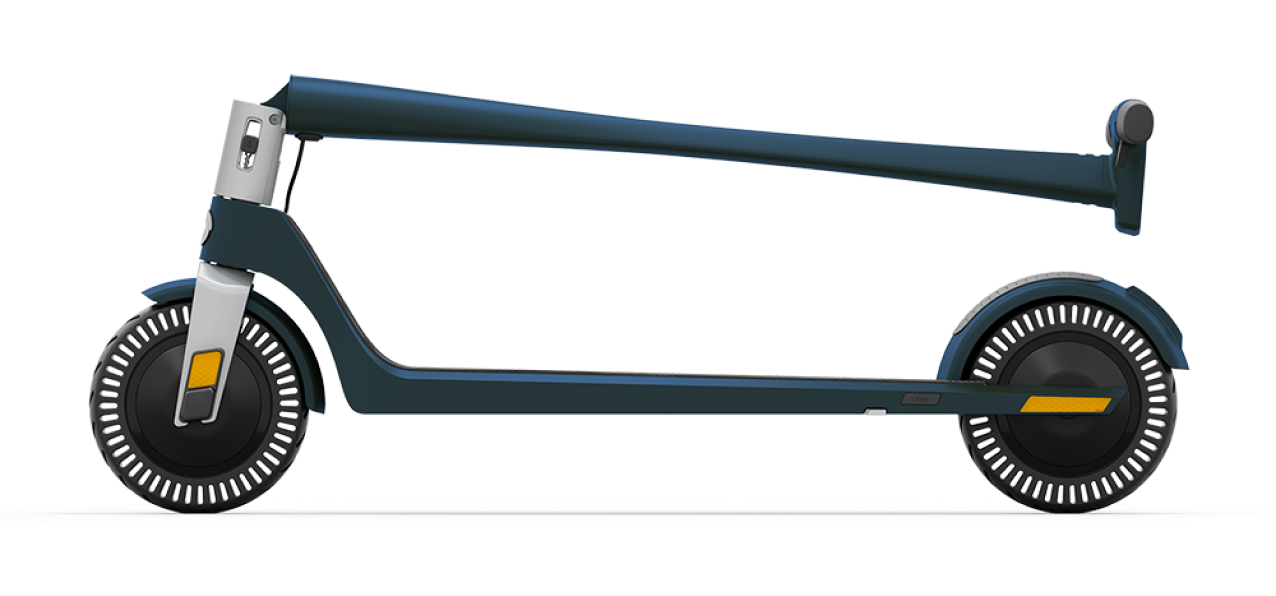
Our new flagship takes you further, with more power, twice the range, and “smart” features from its integrated mobile app like remote lock/unlock, accurate “distance to empty” stats and more.
$1,490.00 MSRP
Rent starting at $79/mo
Specifications
Range (nominal), charge time.
0-100% (4.5 hr) / 0-80% (3.5 hr) / 0-50% (1 hr)
0-100% (3 hr) / 0-80% (2 hr) / 0-50% (1 hr)
I/O interface
Handlebar only
Handlebar or Mobile App
Power (nominal)
500W (2 x 250W motors)
Power (max)
Torque (max).
7.5 in (diameter) / 1.6 in (width)

Unagi Model One Voyager review
The same sleek looks, but improved internals in one of the best electric scooters.

Tom's Guide Verdict
The Unagi Model One Voyager has twice the range of the original Unagi, along with a few other niceties such as a remote lock. And it’s still one of the sexiest scooters around.
Elegant, practical design
Very good range
Fast acceleration
Large, clear display
Rubber tires make for a rough ride
Why you can trust Tom's Guide Our writers and editors spend hours analyzing and reviewing products, services, and apps to help find what's best for you. Find out more about how we test, analyze, and rate.
- Price and availability
- Voyager vs. Classic
- Performance
- Range and battery life
When the Unagi Model One made its debut, it was an impressive scooter not just for its design, but its capabilities. Not only did it look amazing, but it was very light, yet powerful for its size. So how do you improve on one of the best electric scooters ?
The Unagi Model One ’s successor, the Model One Voyager, doesn’t make too many radical changes, but nearly doubles the range of the original, and adds some new features, such as a Bluetooth locking mechanism. And it does so while keeping the weight nearly the same, too. Read the rest of my Unagi Model One Voyager review to see if this is the best electric scooter for that last-mile ride.
Unagi Model One Voyager review: Price and availability
The Model One Voyager was initially available to order as of April 1, 2023, and was originally scheduled to ship at the end of that month; however, it's been delayed by nearly a year, and now is expected to ship in March 2024.
It will be available in four colors (Deep Cobalt, Cool Mist, Matte Black, and Latte) and retail for $1,490.
If you want to get it sooner, Unagi offers a subscription plan, whereby you can pay $69 per month plus a one-time $119 setup fee. You can also get theft protection for an extra $5/month.
The Model One Classic (formerly known as the Model One E500) is now only offered on a subscription basis for $39/month.
Unagi Model One Voyager vs. Unagi Model One Classic
The biggest difference between the Unagi Model One Classic and Voyager comes down to range: the Voyager has about twice the range as the Classic. In addition, the Voyager is a bit more capable when going up hills and, as we’ll discuss later, it also connects to an app that adds a few more features.
Unagi Model One Voyager review: Design
There’s almost no difference between the Voyager and the Classic Unagi Model One. Side by side, they’re practically identical. And that’s a good thing: even though it’s been on the market for around five years, there has yet to be a scooter that looks as sleek as the Unagi.

The Voyager’s downtube is made of the same carbon fiber, and has a unique pyramidal shape that’s thinnest in the middle, and flares out at both ends. Not only is it elegant, but it also makes the Voyager very easy to carry when folded.

A large black and white LED display between the handlebars displays your speed, distance traveled, battery life, and if you’re using one or both of the scooter’s motors. On the left side is a push lever for the brakes, and on the right is the throttle.

As should be expected of a scooter at this price, the Voyager has a headlight and a tail light; the latter remains on all the time, and flashes when you hit the brakes, which is a feature I like. The headlight — two LEDS — serves up a nice large bright beam that hits the ground about 15 feet in front of the scooter, which gave me ample time to see and avoid potential obstacles.
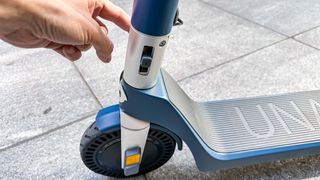
One of the best design elements of the Voyager — really, of any scooter I’ve tested — is the downtube’s folding and locking mechanism. Simply pull down on two tabs, and the downtube folds down and locks into place; no extra latches or hooks here.
Unagi Model One Voyager review: Performance
The Model One Voyager was every bit as speedy and responsive as the original. On my test hill, which has a 6 percent grade, the Voyager sped up it at around 11 miles per hour, the same as the Model One Classic.

When you first unbox the Voyager, you can select from three speed modes, which limit the top speed to 9, 12, and 15 miles per hour, respectively. A special code unlocks the Voyager’s top speed to 20 MPH (turn the scooter on, press and hold both the brake and accelerator, and then press the power button 10 times quickly. You should hear a few beeps from the scooter). Then you’ll really fly.

My two main issues with the Voyager are the same as the original. Its rubber wheels and lack of any sort of shock absorption make for a pretty rough ride. A tubeless air-filled tire would go a long way here.
The other quibble is that the Voyager’s electronic horn is pretty feeble. When I was riding it in Manhattan, I could barely hear it over the din of the city traffic. It needs something louder to alert others in front of you.
Unagi Model One Voyager review: Range and battery life
Unagi advertises the Voyager as having a range of between 12 and 25 miles, depending on the weight of the rider, the terrain, and other factors. That range is double the Unagi Classic (7-12 miles), though it should be noted that when the Classic first came out, Unagi said it had a 15-mile range.
I’ve found with every scooter I’ve tested that the range estimates are very optimistic, especially for a rider such as myself who weighs closer to 200 pounds than he’d like to admit. I also live in a fairly hilly area, which further decreases the range.

On the Voyager, I was able to get just about 12 miles out of the scooter before the battery died. When the battery gets to about 10 percent remaining, the scooter starts beeping intermittently. When the battery drops to 5 percent, the beeping gets more persistent, and the Voyager’s top speed drops, so as to eke out as much range as possible.
The Voyager also can be charged up completely in three hours, half the time it takes the Model One Classic.
Unagi Model One Voyager review: App
Another difference between the Voyager and the Classic is that the Voyager can be paired with an app via Bluetooth, which lets you change some settings, such as the max speed, whether you want to use one motor or two, and turn on the headlight.
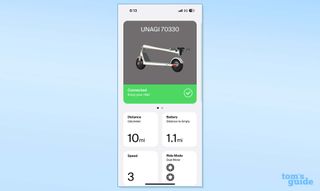
The app also provides an estimate of how many miles you can go before the battery dies; however, you need to enter your weight into the app to get an accurate estimate. Also, the app has a remote lock feature, which is a nice anti-theft measure — not that you shouldn’t also lock up the scooter.
Unagi Model One Voyager review: Verdict
Unagi originally planned to follow up the Model One with the Model Eleven, which was going to cost around $2,400 and have such features as automated driver assistance, a Bluetooth speaker, GPS tracking, and a swappable battery. However, that proved overly ambitious. Instead, it has come out with something a bit more practical (and affordable) with the Model One Voyager — if you consider $1,500 affordable.
Among the best electric scooters , it's worth checking out the Hiboy S2 , which is a third of the price; it doesn't have the range of the Unagi, but it should suffice for many. In the same price range as the Unagi is the Niu Kqi Air ( $1,399, Best Buy ), which weighs the same as the Voayger, but has an even better 31-mile range.
The Voyager is a nice step up from the original, and while I wish it had different tires and a beefier horn, it’s still the best scooter for those who need a last-mile transport to get them from a train or bus to their office or home. And it looks really awesome, too.

Michael A. Prospero is the U.S. Editor-in-Chief for Tom’s Guide. He oversees all evergreen content and oversees the Homes, Smart Home, and Fitness/Wearables categories for the site. In his spare time, he also tests out the latest drones, electric scooters, and smart home gadgets, such as video doorbells. Before his tenure at Tom's Guide, he was the Reviews Editor for Laptop Magazine, a reporter at Fast Company, the Times of Trenton, and, many eons back, an intern at George magazine. He received his undergraduate degree from Boston College, where he worked on the campus newspaper The Heights, and then attended the Columbia University school of Journalism. When he’s not testing out the latest running watch, electric scooter, or skiing or training for a marathon, he’s probably using the latest sous vide machine, smoker, or pizza oven, to the delight — or chagrin — of his family.
I took over 200 photos with the Google Pixel 8a vs Pixel 7a — here's the winner
Latest iPhone 17 Slim rumor: It could cost more than the iPhone Pro Max
iOS 18 is getting a major upgrade that solves a big problem for iPhone users
Most Popular
- Rideables /
Unagi’s new electric scooter adds more range to woo more commuters
Unagi is all in on subscriptions — and maximizing range.
By David Pierce , editor-at-large and Vergecast co-host with over a decade of experience covering consumer tech. Previously, at Protocol, The Wall Street Journal, and Wired.
Share this story
:format(webp)/cdn.vox-cdn.com/uploads/chorus_asset/file/24023437/Latte_Centered.jpg)
Unagi, the electric scooter maker behind one of the better micromobilty vehicles on the market right now, has a new model ready for you. It’s called the Model One Voyager, and it’s meant to last longer, ride more smoothly, and be easier to use. The only thing is: Unagi doesn’t really want you to buy one. It would much rather you subscribe to one.
David Hyman, Unagi’s CEO, is absolutely convinced that subscription is the future of scooters. Not plunking down $1,000 for one and definitely not a ride-sharing one. “It was a total fluke that electric scooters started through ride-sharing,” he says over Zoom from his California home. Bird, Lime, and the rest got people used to the idea that a scooter could be a useful vehicle for getting around, but “you’ve got to wake up, hunt, and peck for one, usually the first or second or third ones are broken, or the batteries are dead.” Buying one solves most of those problems — “it’s like your own magic carpet,” Hyman says — but comes with its own downsides. Namely, scooters are expensive and often pretty flimsy. Plus, where do you put it when you get to the restaurant?
For the last few years, Unagi has experimented with an in-between model: users pay about $50 a month to get their own Unagi Model One scooter, but Unagi handles all the maintenance and even replaces the scooter if it’s broken or stolen. Hyman compares the model to Netflix’s DVD-by-mail system — it’s stuff as a service.
The subscription model is working for Unagi to the point where Hyman is pivoting the company around it. Already, he says, 20 people sign up for an Unagi subscription for every one who buys a scooter outright, and the company has “tens of thousands” of active scooter subscribers. Now, Unagi is launching the Voyager to try to get even more riders on board and is killing its most ambitious project ever because it doesn’t fit the model anymore. At least as far as Unagi is concerned, scooters as a service is the future of micromobility.
I’ve been an Unagi subscriber for the last few months after some back-of-the-napkin math made it clear that even my occasional rides to train stations and grocery stores were adding up to more than $50 a month. (Many of the scooter-share companies have jacked up their prices considerably over the last couple of years to make up for VC funding drying up and an early pandemic downturn.) It’s definitely less convenient since I can’t just dump my scooter on the street when I’m done with it, but knowing there’s one always available has made me trust the scooter system much more.
I now ride mine almost every day: to pick up takeout dinner, to grab a quick coffee between meetings, to hop on the subway to get to the office. Luckily, I live in a town with great roads and respectful traffic and only occasionally have to brave the truly mean streets of Washington, DC.
:format(webp)/cdn.vox-cdn.com/uploads/chorus_asset/file/13432085/jbareham_181112_3077_0037.jpg)
I’m still on the standard Model One, but I might be due for an upgrade. Unagi’s new scooter, the Model One Voyager, was built to solve one very specific problem: range. The number one reason people return their Unagis and cancel their subscriptions, Hyman says, is because the Model One’s advertised 15.5-mile range just isn’t enough. The Voyager, in comparison, is rated to last a full 25 miles on a charge, which is far more than most scooters can claim. “We’ve taken range off the table,” Hyman says. In exchange, the Voyager is slightly heavier — at 29.6 pounds, it’s just over a pound heavier than the Model One — but it’s still among the lighter models in its category.
The Voyager also has more torque and higher peak power, charges slightly faster, and comes in a couple of new colors, including one that Hyman himself describes as Unagi’s “bougiest” color yet: a white scooter with brown accents that the company calls Latte. (It was almost creme brulee, he says, but that was a step too far.) There’s nothing game-changing in the new model — which I suppose is why it’s not called the Model Two — but it should make everyday use a little more pleasant.
There’s nothing game-changing in the new model, but it should make everyday use a little more pleasant
Unagi is also upgrading the smarts inside its scooters. The Voyager’s onboard display has been simplified and upgraded to make settings easier to find, and it also now connects to an Unagi app over Bluetooth. You can use the app to toggle your headlights, see how much you’ve ridden and how much battery remains, plus get information about maintenance issues and your subscription. The app isn’t meant to replace the functionality on the scooter itself, Hyman says, just give you another way to access it.
:format(webp)/cdn.vox-cdn.com/uploads/chorus_asset/file/24023473/Screen_Shot_2022_09_14_at_4.20.54_PM.png)
The Voyager’s new display and connectivity are also compatible with the original Model One. Part of Unagi’s subscription system involves refurbishing returned scooters and sending them out to new users, and from now on, Hyman says the company will drop in the new parts when a Model One comes back. The whole process costs $15 a scooter.
A subscription Voyager will run you $67 a month, which is $12 more than the Model One’s $55 monthly hit. You might notice even the Model One is more expensive than it used to be, sort of — the subscription itself was previously $49, and for another $5 a month, you could get theft insurance. Just about everyone ponied up the extra $5, Hyman tells me, so Unagi just decided to bake it into the base price. (Where that last dollar a month went, though, he wouldn’t say.)
You’ll be able to start your subscription through Unagi’s website, but the company’s also going to start selling scooters in Best Buy — and Hyman hints there are other brick-and-mortar partnerships to come. It’s the same theory as rideshare: the first step is just getting people to think about scooters at all, and once they do, they’re often sold.
The scooter Unagi is shipping next is more practical but vastly less ambitious than the one it has decided not to ship at all. Last fall, the company revealed Model Eleven , a $2,490 vehicle that used a multi-lens camera system to help riders avoid crashes, was created with a new material called “long carbon,” and could do turn-by-turn audio directions. It was meant to be the Tesla Roadster of scooters, with a price tag to match.
The Model Eleven raised more than $700,000 on Indiegogo, but Unagi recently canceled the project. Hyman calls it “one of the hardest, most emotionally challenging business decisions I’ve ever made” after years of work and millions of dollars spent on its development. In the long run, Hyman says he hopes the Model Eleven’s features will appear in other Unagi devices, but it just didn’t make sense for the business anymore. Unagi is offering backers a full refund, two Voyagers, or a three-year subscription to a Voyager as compensation.
Ultimately, there will be lots of different kinds of these vehicles, probably including impossibly expensive and massively powerful scooters. Research from McKinsey and others has found that the micromobility market is growing almost any way you slice it: new vehicles, new riders, new cities, and new business models.
There won’t just be one winner, either. “If you truly want to get rid of your car and live micromobility only, or micromobility plus car sharing if you’ll do a trip outside the city, it’s going to be a combination of form factors,” McKinsey partner Kersten Heineke said recently . Hyman, too, is quick to point out that companies like Rad Power Bikes are doing cool work in the space. But he seems to still think he’s going to win in the end.
During our conversations, Hyman mentions a few times how hard it was to get the subscription service up and running. Maintenance teams, customer support services, quick shipping — it might not be as expensive as setting up fleets of chargers and mechanics in every city the way Bird and Lime have, but it hasn’t been easy. Going forward, though, he’s convinced Unagi is set up for the way people want to live with their scooters. And he’s convinced Unagi still makes the best ones.
The MSI Claw is an embarrassment
New teslas might lose steam, the delta emulator is changing its logo after adobe threatened it, sugar’s big twist was more than a gimmick, rei’s anniversary sale is slashing prices on some of the best garmin watches.
More from Transpo
:format(webp)/cdn.vox-cdn.com/uploads/chorus_asset/file/25287483/Scout_Motors_Inc_Front_Design_Teaser.jpg)
Scout Motors wants to put the ‘mechanical’ back into electric trucks
:format(webp)/cdn.vox-cdn.com/uploads/chorus_asset/file/24289218/226446_Lucid_Air_TStevens_0008.jpg)
Lucid slashes prices for its luxury EVs for the third time in seven months
:format(webp)/cdn.vox-cdn.com/uploads/chorus_asset/file/24822928/cadillac_escalade_super_cruise.jpeg)
GM is preparing for another major expansion of its hands-free Super Cruise system
:format(webp)/cdn.vox-cdn.com/uploads/chorus_asset/file/23986648/acastro_STK086_03.jpg)
Tesla’s latest update takes aim at cold weather woes
electric scooter
Unagi model one voyager review: what makes this luxury e-scooter so special.
If the term “luxury scooter” sounds odd to you, then you must have never seen an Unagi before. These scooters buck the trend of massive, bulky, and clunky-looking e-scooters to instead offer something much more elegant and refined. The new Unagi Model One Voyager electric scooter maintains the classy looks we’ve come to expect from Unagi, yet packs in better performance for an even more impressive ride.
Don’t get me wrong, I love a big and powerful scooter as much as the next guy. But I’ve yet to see a powerful scooter that didn’t look like a blacked-out tactical piece of gear that a SWAT team would use if a hostage situation called for e-scooters.
For anyone who wants to get up to faster speeds than most budget scooters but doesn’t want to look like you’re riding a chunky, clunky Erector Set scooter, then the Unagi Model One Voyager very well may be for you.
It has its faults, but it’s an awesome scooter for riders seeking a slick design that doesn’t skimp on the performance.
See what I mean in my video review below, then keep reading for even more details on this awesome new electric scooter.
Unagi Model One Voyager video review
Unagi Model One Tech Specs
- Motors : Dual 250W continuous motors (each motor peaks at 500W)
- Battery : 36V 10Ah (360Wh)
- Top speed : 20 mph (32 km/h)
- Range : 12-25 miles (20-40 km)
- Weight : 29.6 lb. (13.4 kg)
- Frame : Aluminum, magnesium and carbon fiber
- Load capacity : 220 lb (100 kg)
- Brakes : Front and rear regenerative brakes, rear stomp brake
- Tires : 7.5″ hollow void air-less tires
- Lights : Front and rear LED
- Price : $1,190 (or $69 per month subscription)

What makes it so special?
Unlike bulkier electric scooters, the Unagi Model One Voyager weighs in at a petite 29.6 lb. (13.4 kg). And having carried it around myself, I can tell you that it feels even lighter than that.
The gently sloping curves of the carbon fiber stem make it comfortable in the hand too, which likely contributes to it feeling even lighter than it is when carrying the scooter.
The lightweight design is helped by the exotic material choice. Sure, there’s an aluminum deck for strength. But the carbon fiber stem is topped with a magnesium handlebar that is machined to fit that unique display and houses built-in buttons as well as dual throttle/brake thumb paddles.
Even smaller features like the kickstand are slickly designed to add to the overall classy feeling of the scooter. Most other e-scooters have afterthought kickstands that are purely function with seemingly little thought to form. But the Unagi’s kickstand actually looks like it matches the scooter. If all you care about is getting to your destination, a fancy scooter and matching kickstand will mean nothing to you. But if you want your ride to look good on the way, then small details like this really add up.
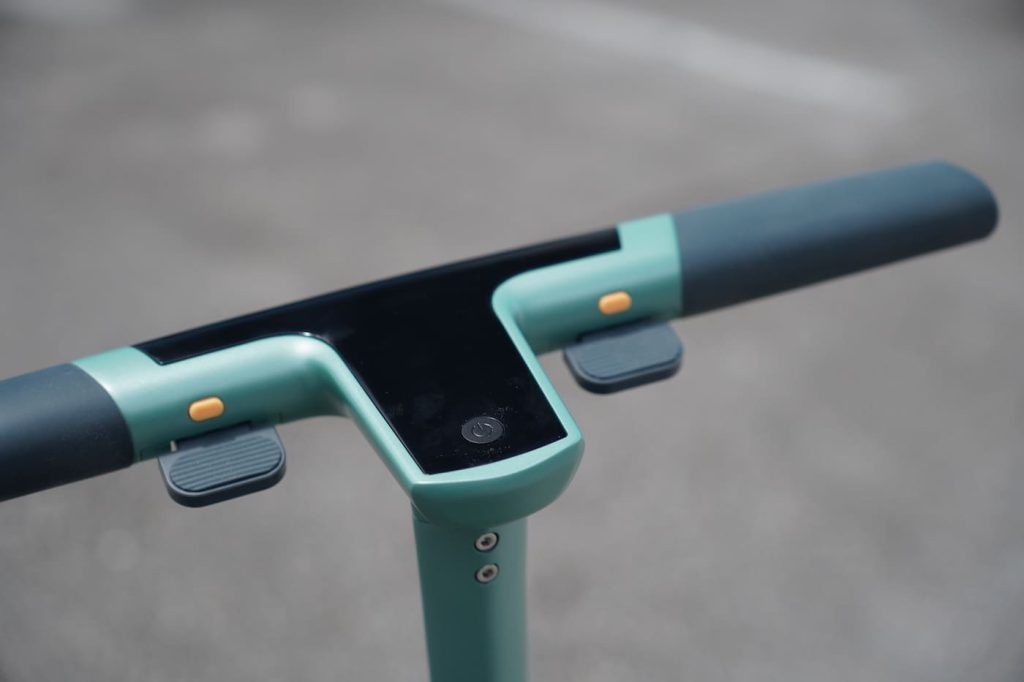
Compared to the previous Unagi Model One electric scooter, the new Voyager gets several upgrades. Perhaps the most important is the new battery pack. It’s now a larger 360Wh battery at a higher voltage of 36V.
That new battery powers the dual 500W peak-rated motors up to 20 mph (32 km/h), and for between 12 to 25 miles (20 to 40 km) of range, depending on how fast and hard you ride.
There’s even a new app interface for interacting with the scooter, which anyone who appreciates the techier side of EVs will enjoy.
Other features that we saw on previous Unagi versions still remain here on the Voyager, including the super slick one-button folding mechanism that is likely the easiest scooter folding setup I’ve ever seen, plus the highly effective dual wheel motoring braking. In fact, I almost never use the rear stomp brake since the motor braking is plenty for basically every braking scenario.
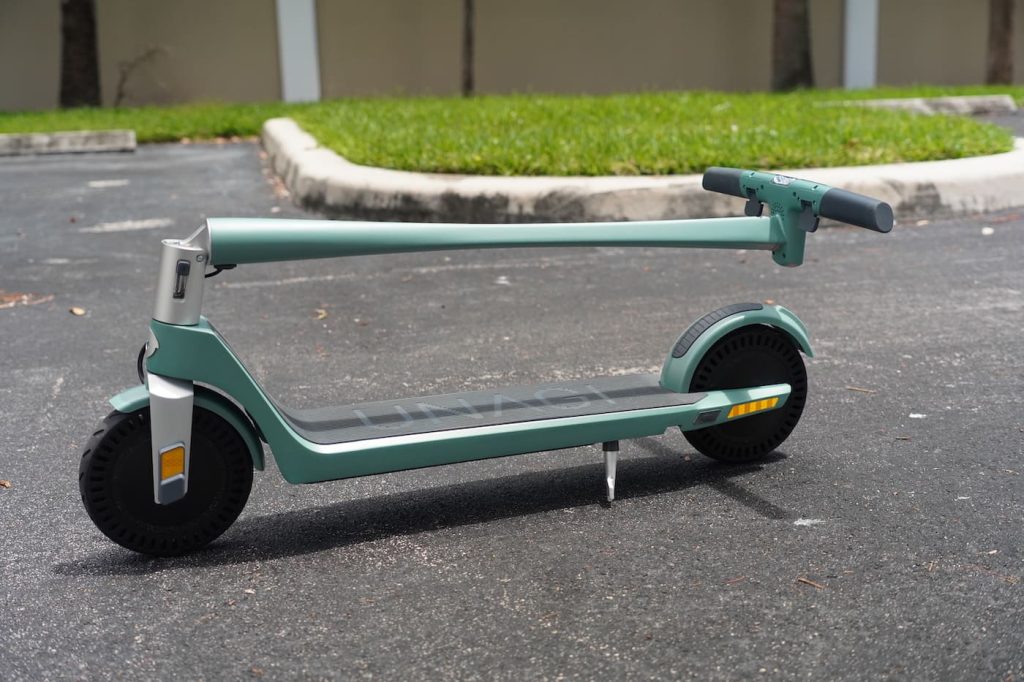
What about the downsides?
The Unagi Model One Voyager electric scooter is a poetic masterclass of engineering design, but it isn’t without its faults. The downside of such a sleek and elegant scooter is that it isn’t as robust as larger models. This lightweight ride is rated for riders up to 220 lb. (100 kg), which will fit the majority of us but still precludes more riders than many other larger e-scooters.
The smaller wheels and lack of suspension also mean the ride is a bit rougher on less than perfect roads. When I’m on a smooth road, the honeycomb-style tires absorb the slight road vibrations well. But on pavers, brick paths, or anything with repeating patterns, the lack of suspension in noticeable on those smaller 7.5″ tires. I find myself needing to stay soft in the knees when I see rough patches ahead.
Of course the flip side of that coin is that you’ll never get a flat tire due to the airless tire design. So if you mainly commute on fairly nice paths and bike lines, this may be a compromise that you’ll gladly make.
And lastly, the scooter is so good-looking that I’m super worried about scratching it or damaging it. It seems well made like I can toss it around, but that doesn’t mean that each scratch won’t hurt me more than on an ugly scooter. And pretty scooters are probably theft magnets, but at least the Unagi is so light that it’s easy to carry in with you so you’re not tempted to lock it outside very often.

Is it worth the price?
At $1,190 , this is not a cheap scooter. You can get these performance specs for significantly less dough from a number of manufacturers. No one is going to buy an Unagi because it’s a “deal.” That’d be silly. They’re going to buy it because it looks good and is convenient to use.
Few scooters can match its performance-to-pound ratio. And no other scooters can match its style points.
The fact that it even includes “typical” scooter features like headlights and brake/tail lights, horn, stomp brake, and other features is just icing on the cake for anyone looking for a sexier scooter than you’ll find on the typical Amazon bestselling scooter list.
So if you’re shopping on a budget, this is probably not the scooter for you. But if you’ve got a bit more cash to toss around and you want something special, it’s hard to find any scooters more unique than the Unagi Model One Voyager. It doesn’t just look good, it also performs well. You’ll just have to pay up for that elusive combination.
Or if you don’t want to pay in full, you may be able to take advantage of Unagi’s subscription service too. It starts from $69 per month, includes free shipping, and takes care of all the service for you. Not too shabby for a luxury electric scooter!
FTC: We use income earning auto affiliate links. More.

Micah Toll is a personal electric vehicle enthusiast, battery nerd, and author of the Amazon #1 bestselling books DIY Lithium Batteries , DIY Solar Power, The Ultimate DIY Ebike Guide and The Electric Bike Manifesto .
The e-bikes that make up Micah’s current daily drivers are the $999 Lectric XP 2.0 , the $1,095 Ride1Up Roadster V2 , the $1,199 Rad Power Bikes RadMission , and the $3,299 Priority Current . But it’s a pretty evolving list these days.
You can send Micah tips at [email protected], or find him on Twitter , Instagram , or TikTok .
Micah Toll's favorite gear

Lectric XP 3.0 e-bike sale
Best $999 electric bike ever!

Rad Power Bikes sales
Great e-bikes at great prices!

Manage push notifications

Unagi Model One Voyager review: just as stunning but now longer-lasting
Sadly, it comes with the same flaws as well.

TechRadar Verdict
With a longer range and faster charging time, the Unagi Model One Voyager comes with welcome upgrades. Unfortunately, they aren’t the ones the Unagi line sorely needs.
Sleek, lightweight, attractive
Smooth ride on smooth roads
Easy to set up, intuitive to use
Longer range than the Classic
Faster charging
Same solid wheels that are not best for rough roads
Even more expensive than the Classic
Foot brake isn’t the best
Why you can trust TechRadar We spend hours testing every product or service we review, so you can be sure you’re buying the best. Find out more about how we test.
- Two-minute review
- Price & availability
- Should you buy it?
- Also consider
- How I tested
Unagi Model One Voyager: Two-minute review
The Unagi Model One Voyager follows in the footsteps of its predecessor. Now bearing the moniker “Classic,” the Unagi Model One has established itself as one of the best electric scooters on the market for its sleek and sexy look, lightweight and modern minimalist design, and effortless use. However, it’s plagued with 7.5-inch solid tires that are only really ideal if you live in a city with immaculate roads. Anywhere else, which is pretty much everywhere, they’re a literal headache to ride on.
Unfortunately, the Model One Voyager has inherited that same curse. There are some welcome improvements here, of course. It now has a longer range, faster charging time, more torque, and mobile app support, all of which are welcome upgrades. But where the upgrades would have mattered – better shock absorption, for one – there aren’t any.
And so having the ability to ride this for up to 25 miles (as opposed to the original’s 15 miles) is for naught – because I wouldn’t want to be riding that long or even half that distance if my whole body, including my brain, is vibrating during a good chunk of it.

That isn’t to diminish the Unagi Model One Voyager’s strengths. I absolutely love its sleek, lightweight, and modern minimalist approach with its thin and elegant yet still very robust stem (apparently made of the same carbon fiber as the Space-X rockets), and its luxurious and stylish handlebar that houses a straightforward dashboard and intuitive controls.
Overall, it’s simply a stunner, and it comes in four different colors as well – Cobalt Blue, Cool Mist, Matte Black, and Latte – making it stand out even more in a sea of black e-scooters and among the best electric scooters for students (or at least for students whose parents can afford to splurge over $1,000/£1,000 on an e-scooter for them).
It’s a great example of when design meets function, and riding on this electric scooter feels like you’re doing so in the future, circa 2049.
There’s a long list of thoughtful details as well that make it an e-scooter of the future. The folding mechanism, for one, is one of the easiest to operate that I’ve seen. You simply fold down the lever and pull the stem down. It automatically locks itself securely in place without any fasteners you’d have to hook yourself, and unfolding is just as easy.
More to that point, the deck is thin but somehow spacious enough for average-sized adults to stand comfortably on. And the rubber top does a fantastic job of preventing accidental slips.
Meanwhile, both the brake and the throttle, identical-looking, are levers – which I find easier to handle and less fatiguing. As for the physical controls, there is a separate riding mode button within easy reach so you can effortlessly change modes and speed up when necessary. And finally, the dashboard is decently visible in daylight, so you won’t have to squint when checking your speed and other settings during a ride.
I just wish they had improved on that kickstand. It’s still too short to keep the e-scooter stable at rest. I’ve lost count of how many times mine has toppled over from the slightest pressure.
Physically, the Model One Voyager looks every bit like the Model One Classic, which is all well and good. No one needs to reinvent the wheel – unless, of course, the wheels just aren’t cutting it, which is the case here. It also inherits the Classic’s 7.5-inch solid tires, which to their credit, are puncture-proof due to their nature.
However, due to that very nature as well as their size, they’re just not the best at absorbing shocks. In fact, while Unagi tries to fix that by installing “air pockets” on them to act as the suspension system, shock absorption on this is practically non-existent.
As a result, riding the Unagi Model One Voyager on anything other than nicely-paved roads will give you a headache. If you were to ride this e-scooter in Singapore or Switzerland, both of which have top-notch road quality, then you’d have the smoothest rides. Unfortunately, in many e-scooter-friendly cities like Los Angeles, it’s not the most ideal. And I’m not exaggerating about the headache – I rode this thing around my neighborhood and I got a migraine after 10 minutes of riding.
It is, however, nice to have better-performing brakes than the Classic. While the foot brake is not the best, the hand brake is actually very powerful and responsive. Just keep in mind, however, that the brake lever itself doesn’t have a lot of resistance, which means it’s very easy to press it hard. I would do some practice rides first to get used to the brake lever before taking this out on the road.
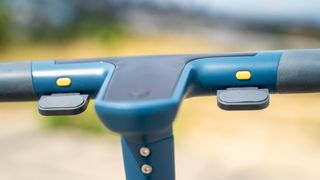
The throttle is just fantastic. It doesn’t matter what mode you’re on; because this has more torque, it picks up speed quickly so you can get going and be on your way within a fraction of a second. And with a top speed of 20mph, you can get to your destination faster – at least on roads where you can go faster than 15mph.
I would skip riding this on hilly roads, however. Unagi hasn’t listed its hill grade rating, but it struggled to stay above 7mph on a 15-degree hill during my testing. On the plus side, Unagi slaps on a bigger battery, one with fast-charging capabilities. So you’re getting up to 25 miles of ride time and only need about two hours of charging to get to 80%.
That’s certainly a nice improvement. However, I’d rather be charging every night and have smoother rides on my daily commutes than charge less frequently and get a headache every time I’m riding my e-scooter.
Unagi Model One Voyager: Price & availability
- How much does it cost? $1,490 (about £1,200 / AU$2,350)
- When is it available? Ships in March 2024
- Where can you get it? Available for pre-order in the US
The Unagi Model One Voyager won’t be making anyone’s best budget electric scooters list anytime soon. If you think the Classic was expensive, get a load of the price tag on this. It’ll set you back a whopping $1,490 (about £1,200 / AU$2,350), which is a massive jump from the Classic’s $990 / £899 / AU$1,299 release price – hardly justifiable, even if you’re getting a bit more power and a better battery.
If you’re seeking something more affordable, consider the Levy Plus ($749 / £560 / AU$1,095) or the NIU KQi3 Pro ($799 / £699 / AU$1,279), both of which are fantastic alternatives.
If you want the Unagi Model One Voyager and are willing to shell out that much money, it’s available now in the US for pre-order. Unagi won’t start shipping units out until March 2024, according to its website. And it’s not currently available for pre-order in the UK and Australia.
- Value: 3 / 5
Unagi Model One Voyager: Specs

Should you buy the Unagi Model One Voyager?
Buy it if....
You want something stylish and very lightweight There’s no denying that the Unagi Model One Voyager is one of the sexiest e-scooters on the market. And it’s incredibly lightweight as well, making it easy to store or carry.
You’ve got deep pockets That style and those upgrades come at a cost. It’s even pricier than the Model One Classic, putting it out of reach for budget-minded consumers.
You live in a city with excellent road quality If the city or town you live in has the smoothest, best quality roads, this is the e-scooter to get. Otherwise, you’re better off looking for other options, many of which are much more affordable too.
Don't buy it if...
You want a smooth yet affordable ride It’s expensive and its 7.5-inch solid tires are not best for rougher roads. Don’t worry; there are plenty of other options that will suit your needs and budget.
Unagi Model One Voyager: Also consider

Levy Plus This is a fantastic and affordable city commuter that can handle rough roads. It’s sleek, portable, and minimalist but fitted with fat tires for much smoother rides.
Read our full Levy Plus review

NIU KQi3 Pro It may be bigger and heavier, but it has a powerful motor and fat tires, plus anti-theft, a longer range of 31 miles, and a top speed of 20mph.
Read our full NIU KQi3 Pro review
How I tested the Unagi Model One Voyager
- Spent a couple of weeks testing the Unagi Model One Voyager
- Rode it on paved paths as well as rougher trails and hilly roads
- Tested its performance and features in real-world scenarios
With LA being an e-scooter-friendly city, I regularly used the Unagi Model One Voyager to run errands and for rides around the neighborhoods for a couple of weeks.
I rode it up and down a hill, testing its brakes in the process, and on rougher roads, seeing if its tires are able to offer enough traction and how good (or bad) its ability is to absorb shock. I also tested its battery life as well. And, while there aren't a lot of features here, I made sure to test the basic ones that it does offer.
I've been a regular electric scooter user for years and have tested and reviewed many of the top models on the market for different publications, including TechRadar and T3.
Read more about how we test
First reviewed October 2023

Michelle Rae Uy is the former Computing Reviews and Buying Guides Editor at TechRadar. She's a Los Angeles-based tech, travel and lifestyle writer covering a wide range of topics, from computing to the latest in green commutes to the best hiking trails. She's an ambivert who enjoys communing with nature and traveling for months at a time just as much as watching movies and playing sim games at home. That also means that she has a lot more avenues to explore in terms of understanding how tech can improve the different aspects of our lives.
One of the biggest credit card companies is quietly introducing a secret AI weapon to combat billion-dollar financial fraud — Visa will verify every single transaction in real time to eliminate rampant enumeration attacks
Google's Live Caption may soon become more emotionally expressive on Android
Quordle today – hints and answers for Saturday, May 18 (game #845)
Most Popular
Unagi launches the updated Model One Voyager, a subscribable scooter

Unagi is perhaps best known for its Model One and its ( now cancelled ) Model Eleven scooter. Today, the company announced it has a new micromobility transportation tool in the works, the Voyager. It packs significantly more range, power, acceleration and smart mobile app features while keeping the lightweight and portable design of its predecessor. The company is embracing a subscription model to keep prices reasonable.
Unagi throws in the towel on its $700K Model Eleven scooter Indiegogo campaign
Model One Voyager differs from its earlier model in a few important ways. The range goes from 12 to 20 miles, while adding less than a pound of weight. The Voyager also adds a bunch of smartphone features via an app, including scooter status, configuration, app-based locking and account management. The Voyager can deliver up to 1,000 watts of peak power and 32 Nm of torque, a quarter more than the old version. The additional power also gives the new scooter a 25% improvement in acceleration and braking power.
The design of the new scooter is almost identical to the old one, and comes in a few new colors: “Deep Cobalt, Cool Mist, Matte Black and Latte” (all images courtesy of Unagi).

Perhaps most interestingly, the scooters will be available on a subscription plan, which includes free maintenance and theft insurance.
The Model One Voyager clocks in at $67/month with $50 one-time set-up fee, and no contract. The old version can be had at $55 per month with the same deal otherwise. People who are on the old subscription plan can upgrade for $50 (which covers shipping the two scooters), and the difference in the subscription cost.
“I’m incredibly proud to share that ‘Unagi All-Access’, our no-contract, monthly subscription service is now with tens of thousands of members nationwide,” the company’s CEO David Hyman told TechCrunch. “With increased prices of ridesharing and gasoline, along with many urbanites coming back to the office, commuters are flocking to our extremely cost and time-efficient option.”
More TechCrunch
Get the industry’s biggest tech news, techcrunch daily news.
Every weekday and Sunday, you can get the best of TechCrunch’s coverage.
Startups Weekly
Startups are the core of TechCrunch, so get our best coverage delivered weekly.
TechCrunch Fintech
The latest Fintech news and analysis, delivered every Sunday.
TechCrunch Mobility
TechCrunch Mobility is your destination for transportation news and insight.
OpenAI and Google lay out their competing AI visions
Welcome back to TechCrunch’s Week in Review. This week had two major events from OpenAI and Google. OpenAI’s spring update event saw the reveal of its new model, GPT-4o, which…

Expedia says two execs dismissed after ‘violation of company policy’
Expedia says Rathi Murthy and Sreenivas Rachamadugu, respectively its CTO and senior vice president of core services product & engineering, are no longer employed at the travel booking company. In…

With AI startups booming, nap pods and Silicon Valley hustle culture are back
When Jeffrey Wang posted to X asking if anyone wanted to go in on an order of fancy-but-affordable office nap pods, he didn’t expect the post to go viral.

OpenAI created a team to control ‘superintelligent’ AI — then let it wither, source says
OpenAI’s Superalignment team, responsible for developing ways to govern and steer “superintelligent” AI systems, was promised 20% of the company’s compute resources, according to a person from that team. But…

VCs and the military are fueling self-driving startups that don’t need roads
A new crop of early-stage startups — along with some recent VC investments — illustrates a niche emerging in the autonomous vehicle technology sector. Unlike the companies bringing robotaxis to…

Deal Dive: Sagetap looks to bring enterprise software sales into the 21st century
When the founders of Sagetap, Sahil Khanna and Kevin Hughes, started working at early-stage enterprise software startups, they were surprised to find that the companies they worked at were trying…


This Week in AI: OpenAI moves away from safety
Keeping up with an industry as fast-moving as AI is a tall order. So until an AI can do it for you, here’s a handy roundup of recent stories in the world…

Adobe comes after indie game emulator Delta for copying its logo
After Apple loosened its App Store guidelines to permit game emulators, the retro game emulator Delta — an app 10 years in the making — hit the top of the…

Meta’s latest experiment borrows from BeReal’s and Snapchat’s core ideas
Meta is once again taking on its competitors by developing a feature that borrows concepts from others — in this case, BeReal and Snapchat. The company is developing a feature…
Startups Weekly: It’s the dawning of the age of AI — plus, Musk is raging against the machine
Welcome to Startups Weekly! We’ve been drowning in AI news this week, with Google’s I/O setting the pace. And Elon Musk rages against the machine.

IndieBio’s SF incubator lineup is making some wild biotech promises
IndieBio’s Bay Area incubator is about to debut its 15th cohort of biotech startups. We took special note of a few, which were making some major, bordering on ludicrous, claims…

YouTube TV’s ‘multiview’ feature is now available on Android phones and tablets
YouTube TV has announced that its multiview feature for watching four streams at once is now available on Android phones and tablets. The Android launch comes two months after YouTube…

Featured Article
Two Santa Cruz students uncover security bug that could let millions do their laundry for free
CSC ServiceWorks provides laundry machines to thousands of residential homes and universities, but the company ignored requests to fix a security bug.

Harness the TechCrunch Effect: Host a Side Event at Disrupt 2024
TechCrunch Disrupt 2024 is just around the corner, and the buzz is palpable. But what if we told you there’s a chance for you to not just attend, but also…

Pitch Deck Teardown: Goodcarbon’s $5.5M seed deck
Decks are all about telling a compelling story and Goodcarbon does a good job on that front. But there’s important information missing too.

Slack under attack over sneaky AI training policy
Slack is making it difficult for its customers if they want the company to stop using its data for model training.

Healthcare company WebTPA discloses breach affecting 2.5 million people
A Texas-based company that provides health insurance and benefit plans disclosed a data breach affecting almost 2.5 million people, some of whom had their Social Security number stolen. WebTPA said…

Microsoft dodges UK antitrust scrutiny over its Mistral AI stake
Microsoft won’t be facing antitrust scrutiny in the U.K. over its recent investment into French AI startup Mistral AI.

Embedded finance is still trendy as accounting automation startup Ember partners with HSBC UK
Ember has partnered with HSBC in the U.K. so that the bank’s business customers can access Ember’s services from their online accounts.

Kudos lands $10M for an AI smart wallet that picks the best credit card for purchases
Kudos uses AI to figure out consumer spending habits so it can then provide more personalized financial advice, like maximizing rewards and utilizing credit effectively.

EU warns Microsoft it could be fined billions over missing GenAI risk info
The EU’s warning comes after Microsoft failed to respond to a legally binding request for information that focused on its generative AI tools.

A US Trustee wants troubled fintech Synapse to be liquidated via Chapter 7 bankruptcy, cites ‘gross mismanagement’
The prospects for troubled banking-as-a-service startup Synapse have gone from bad to worse this week after a United States Trustee filed an emergency motion on Wednesday. The trustee is asking…

Seraphim’s latest space accelerator welcomes nine companies
U.K.-based Seraphim Space is spinning up its 13th accelerator program, with nine participating companies working on a range of tech from propulsion to in-space manufacturing and space situational awareness. The…

OpenAI inks deal to train AI on Reddit data
OpenAI has reached a deal with Reddit to use the social news site’s data for training AI models. In a blog post on OpenAI’s press relations site, the company said…

X pushes more users to Communities
X users will now be able to discover posts from new Communities that are trending directly from an Explore tab within the section.

Mark Zuckerberg’s makeover: Midlife crisis or carefully crafted rebrand?
For Mark Zuckerberg’s 40th birthday, his wife got him a photoshoot. Zuckerberg gives the camera a sly smile as he sits amid a carefully crafted re-creation of his childhood bedroom.…

Strava taps AI to weed out leaderboard cheats, unveils ‘family’ plan, dark mode and more
Strava announced a slew of features, including AI to weed out leaderboard cheats, a new ‘family’ subscription plan, dark mode and more.

Astronauts fall over. Robotic limbs can help them back up.
We all fall down sometimes. Astronauts are no exception. You need to be in peak physical condition for space travel, but bulky space suits and lower gravity levels can be…

Microsoft’s custom Cobalt chips will come to Azure next week
Microsoft will launch its custom Cobalt 100 chips to customers as a public preview at its Build conference next week, TechCrunch has learned. In an analyst briefing ahead of Build,…
Tesla keeps cutting jobs and the feds probe Waymo
What a wild week for transportation news! It was a smorgasbord of news that seemed to touch every sector and theme in transportation.

Unagi Model One Voyager Review: Would You Subscribe To Ride an E-Scooter?
Unagi’s latest electric scooter, the Model One Voyager, combines convenience and a trusty companion app to make a compelling case for subscription-based electric two-wheelers.
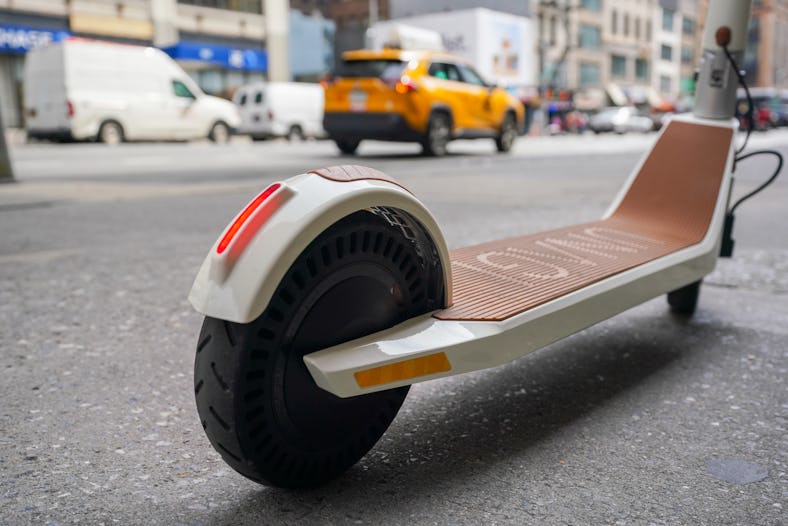
How many subscriptions do you have? As an exercise, before writing this review — which I’m sure you’re already aware is about an e-scooter — I attempted to tally mine. I got to eight, and stopped counting; not because it’s not a worthy exercise, but because a part of me doesn’t even want to know.
Unscientifically, I think if you were to ask most people whether they want or need more subscriptions in their life, the resounding response would be a big, loud, Netflix -addled, “Hell no.”
Yet, it’s 2023, and the people selling things to the people buying things beckon further: Is this a subscription ? Will you, dear consumer, fork out monthly to watch House of Dragon ? How about to get more matches on Hinge ? Will you subscribe to have a chatbot not write your essays? Or to Photoshop the perfect new Fantasy Football avatar? How about to use the key fob on your brand-new Toyota ?

And deep from within that subscription vortex, Unagi , an established purveyor of high-end electric scooters, offers its own proposition: How much money will you pay per month to ride a spiffy electric two-wheeler? I can’t answer that question for you, but I can tell you this — riding Unagi’s Model One Voyager will make you think twice about telling yet another monthly service to shove off.
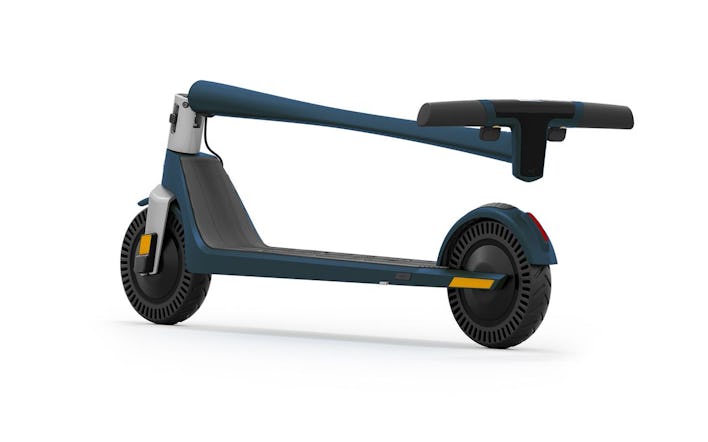
A premium subscription-based e-scooter with a trusty companion app.
Convenience Is King
As someone who’s thought about and tested a few e-bikes and scooters already, I’ve identified some common obstacles (like in any product category) that tend to rear their annoying heads. For electric scooters, there are factors like range and speed of course, but also UX. Does the stem wobble? Is it easy to fold up and down? How does it handle bumps?
Unagi has taken a clear inventory of that spectrum of scooter gripes and identified, smartly, the common thread: convenience. In a press release, Unagi’s CEO, David Hyman, whittled it down ever further: “With tens of thousands of active monthly scooter members on our platform, we’ve learned that our riders value portability over all other competing features...”

The Model One Voyager isn’t the fastest scooter in the world, and that’s a good thing.
And, you know what? If portability was the goal, Unagi nailed it. Hyman is right, as an urban dweller with limited storage space (a demographic that likely describes a not-insignificant portion of e-scooter owners) I need a two-wheeler to be big enough to withstand the potholes crappy urban infrastructure throws at me in a form factor that allows me to manipulate and store my scooter when I’m not riding it.
A lot of that portability starts with both weight and an easily foldable stem. In the Model One Voyager’s case, the latter factor involves simply pulling a lever near the stem’s base up, folding the stem either up or down depending on whether you’re collapsing it or setting it up, and then ensuring that it clicks into place automatically . That means you don’t even have to clasp the stem to anything after it’s folded, just articulate it to the right position and *click* it’s locked in.
This sounds incredibly simple, maybe even boring, but I guess that’s exactly what I’m trying to say. Collapsing the Model One Voyager is so easy it’s almost mind-blowing.
Folding up the Model One Voyager is incredibly easy. Its one-click design doesn’t require any latching or clamps. Just fold it down and click it in place.
Likewise, the riding experience is equally as smooth. A 12-25-mile range, solid acceleration, and 15-20 mph top speed fall squarely in the spectrum of most commuter scooters, and combine for a pleasant and functional experience.
The Model One Voyager comes with two 500W motors and can be ridden with either one or both activated. From an engineering standpoint, one of the most impressive feats of the Model One Voyager is that Unagi was able to double the scooter’s max range compared to the Classic while still keeping it under 30 pounds.
Collapsing the Model One Voyager is so easy it’s almost mind-blowing.
Aiding the Model One Voyager and its lightness is the scooter’s magnesium top bar, which houses a pleasing interface from which riders can select ride modes, turn the scooter off or on, and get readouts for distance until the battery is dead. Magnesium is the key part here according to Unagi, since it’s 33 percent lighter than aluminum.
Having ridden e-scooters across the spectrum — low-end rental scooters and terrifying fast performance scooters like the Apollo Ghost — I can say the Model One Voyager hits what I consider to be the Goldilocks zone (not too fast, not too slow).

For the Voyager One convenience comes before anything, even sometimes luxury. The scooter, like others in Unagi’s lineup, comes equipped with solid tires as opposed to pneumatic air-filled ones. The downside is that sometimes bumps might feel a bit... bumpier. Air-filled counterparts just have a way of mitigating the inevitable shock of your neglected city infrastructure.
From a convenience standpoint, however, solid tires are hard to beat. Where I’d usually have to vigilantly scan the pavement for shards of glass threatening to ruin my ride, knowing there’s no chance of a flat in my future definitely eased my mind. It’s a tradeoff, for sure, but if convenience is still the top metric, then Unagi is speeding past its goal.
The Unagi App
While hardware always comes first in electric mobility, Unagi was clearly intent on making the Model One Voyager a Flagship (capital F intentional).
In this case, that means imbuing the electric scooter with a few app-based perks that — while not necessary to enjoying your scooter ride — definitely make Unagi’s case for being top tier in terms of e-scooter tech.
Through Unagi’s app, you’re granted access to a few quality-of-life perks, chief among them, a first-of-its-kind battery life percentage and distance-until-dead readout that lets you gauge just how much juice your Voyager battery has left in the tank.
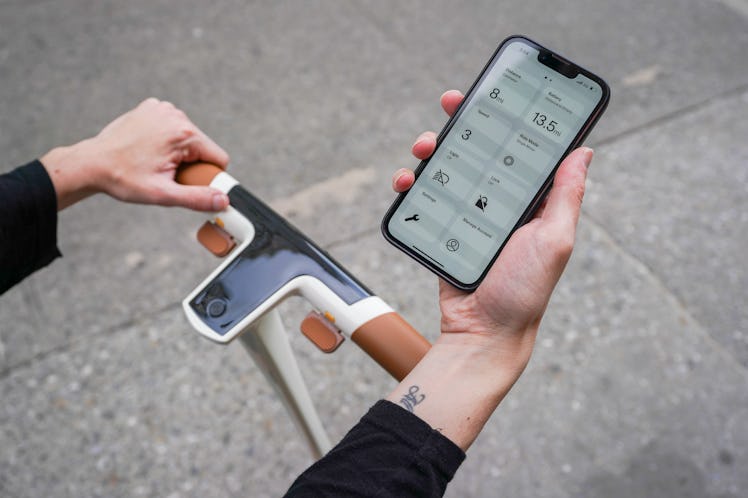
Unagi’s companion app uses Bluetooth to let you gauge distance until your battery is dead, lock your scooter, chance ride modes, and more.
This really came in handy on my first ride through Brooklyn’s Prospect Park when I’d excitedly taken the scooter out for a jaunt without charging it first. I knew I probably didn’t have a cross-country road trip in the tank, but instead of scrutinizing an imprecise battery icon, I was able look at Unagi’s app and glean just how much time I had until worrying about being able to scoot home.
Note: To ensure your distance-until-dead readout is accurate, Unagi recommends inputting your weight and average incline information manually into the app. By default, Unagi’s average rider is set to 165 pounds, but everyone is different, and factors like incline and weight have a significant impact on how hard the scooter has to work to get you around.
In addition to more precise distance readings, Unagi’s app also includes perks found in other e-mobility apps of its ilk, including the ability to set ride modes (dual or single motor riding depending on how much battery you want to conserve) and even a lock feature for extra security. This latter feature, when engaged, ensures that only your phone (when it’s within Bluetooth distance) can turn the scooter on.
Would any rider in their right mind rely solely on the lock feature to guard their scooter while they’re absent? I should hope not. But it’s hard to argue with added security when it’s offered.
Unagi’s Model One Voyager has all the bells and whistles; it’s fun and functional, it looks great, and it’s even got the Unagi pedigree to back it up. For all intents and purposes, Unagi’s scooter is a great ride. But even with all of that in mind, Unagi’s proposition is still a tough sell. It’s one thing to ride, but would you subsc ride ?
If I’m being honest with myself, subscribing monthly to an e-scooter doesn’t feel like a bridge I’m willing to cross, but after spending some time with the Model One Voyager, glomming on yet another subscription to my growing docket of monthly bills did feel a little more palatable. Then again, there are the fees...

In addition to a $50 sign-up fee, Unagi is up-charging for an option to upgrade or replace your Model One Voyager at any point (an additional $10 per month). There’s also mandatory theft insurance, which is charged as either $5 per month or a $300 one-time deposit. Considering $70 per month is already a big ask, I can only assume the fine-print fees won’t help to endear most riders to the idea of leasing an e-scooter.
If there’s a scooter out there that can justify paying $69 a month for, Unagi is still making its best case. And if you’re looking to get your feet wet with an e-scooter, you can cancel your subscription at any time — plus, subscriptions are not a bad way to test the waters. And if you’re more of a buy-the-whole-cow kind of rider, then you better be ready to pony up. To own the Model One Voyager outright you’re going to have to pay $1,190. That’s a lot of money, but in the world of e-mobility, premiums aren’t hard to come by. New e-bikes from top-tier brands like Super73 and VanMoof , for example, can cost anywhere from $2,500 to $3,500. It’s a big ask, even if those e-bikes are proper car replacements.
Which brings me to my next point: commuting. If you feel like you’re going to use Unagi’s latest, greatest scooter enough to qualify as either a partial or whole commuter scooter, maybe $70 a month isn’t such a big ask. I don’t know what your specific commuting expenses are, but maybe it’s comparable, and maybe — just maybe — a subscription-based Model One Voyager can provide you with a more enjoyable way of commuting to and fro.
Either way you slice it, the Model One Voyager is a big ask — whether it’s $70 per month (with fees) or nearly $1,200 outright. Then again, premium is premium, and if you’re in the market for a convenient, fully-loaded e-scooter, Unagi is impossible to ignore.
Photographs by Raymond Wong

Unagi Model One Voyager Review: Futuristic Style with Dual Motor Performance
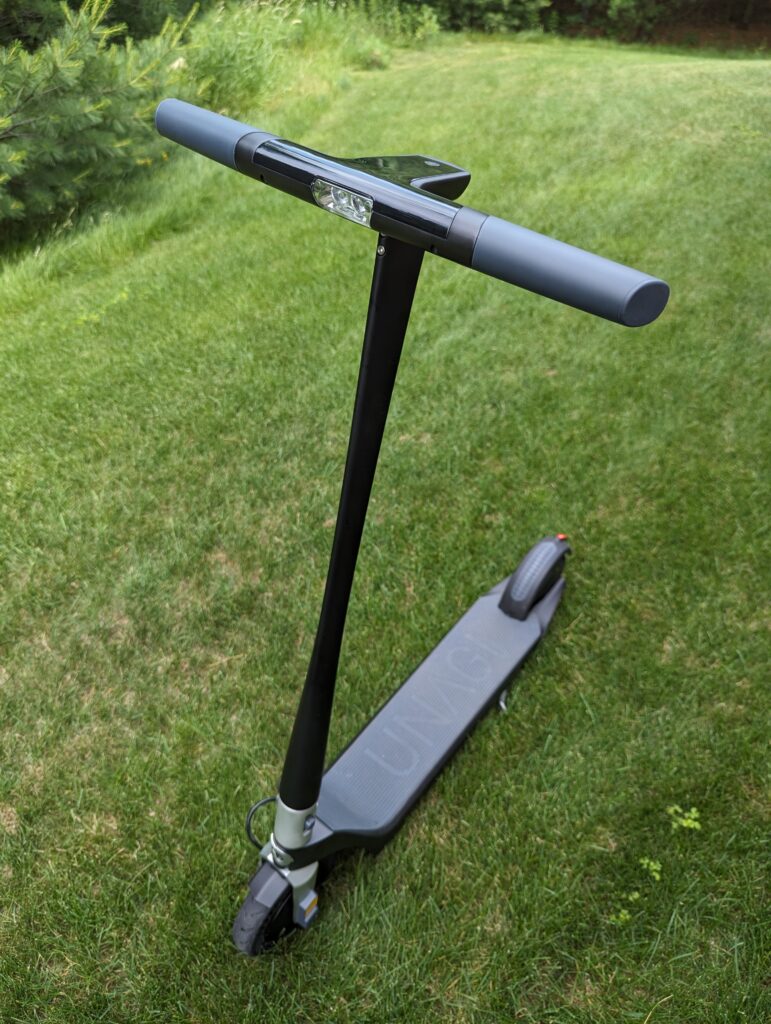
At Ebike Escape we are always on the lookout for new compelling means of transportation on two (or three, or more?) wheels. The Unagi Model One Voyager is a new electric scooter from Unagi that blends a mix of style and performance that sets it apart from the rest of the market. If you are familiar with the Unagi model one classic, the Voyager improves on the power and range of Unagi’s base model. The Voyager retails for $1,190 but is also available for rent for $69 a month. Let’s jump in and see what makes this scooter special!

My first impression is that the voyager is straight out of a sci-fi movie. The sleek modern look makes it known that this is not a children’s toy. Cables are well hidden throughout the scooter – they only make a slight appearance near the bottom stem. The thumb-controlled throttle and brakes complement its design. There are only 3 buttons – 1 for the horn, 1 for speed control/mileage display, and the power button which also swaps between single and dual motors. The deck has a nice grippy rubbery feel to it that runs the entire length of the scooter. There are four small allen screws that secure the handlebar and display to the stem that are barely noticeable. The display is easy to read even in bright sunlight.

The stem has a simple sliding switch that easily collapses and locks the stem into place for portability. It is the easiest folding scooter I’ve reviewed. The stem is triangular shaped, so be aware any accessories you want to attach to it might not work if they are designed for a perfect cylinder-shaped stem. At almost 30 lbs (29.6 according to the spec sheet), I found it easy to carry up and down some stairs during one of my riding breaks.
Model One Voyager Power and Performance
The Unagi Model One Voyager is powered by dual 250 watt motors, capable of 500 watts each for a total of 1000 watts of power. This is an additional 200 Watts of total power over their classic model. I felt comfortable riding flat-level terrain with a single motor, but the additional motor is there when you are in a hurry or climbing lots of hills. The battery capacity is listed at 360Wh / 10 Ah which advertises a 12-25 mile range. This is a significant improvement over the classic’s range of 7-12 miles. The voyager also has the added app ‘range calculator’ feature on the app to help you keep track of how far you can go on your current charge.
Riding the Unagi Model One Voyager
The Unagi Model One Voyager performed admirably during my road tests. Keep in mind I’m about 165 lbs and 5’10” – as each person’s build will produce a slightly different experience. There was more than enough power on even, level roads to keep me cruising at a comfortable pace. The dual motors provided ample power to tackle some very steep hills where I live.
I enjoyed the three different speed settings to “lock in” a max speed. For example, when riding alongside one of my kids, I kept it at speed level two, which kept the scooter under 13 mph so I didn’t get too far ahead. I did unlock the scooter to test out hitting the max of 20 mph as advertised and experienced no problems in stability. For me, 20 mph is the upper limit where I start to feel uncomfortable with how fast I am going. With how easy the scooter folds, I expected more wobble out of the stem but was happily surprised when there was none.
One added feature that Unagi should consider in the future is a cruise control setting. If I wanted to cruise at a certain speed for a longer time, it would be nice to not have to hold down the throttle.

The electronic lever controlled brake is something that takes some getting used to. It is quite different than the pull lever of a traditional brake, and the stopping power is more than I expected. Fortunately, there is a manual heel brake that can help you ease into a stop if the lever brake is too much. Having ridden the scooter for a number of miles now, I am much more comfortable using the electronic brake and I appreciate the stopping power it has in the case of an emergency.
The tires are solid rubber with no suspension, so you would expect a rough ride. I prepared myself for this when I first took it out on the road, but it wasn’t as bad as I originally thought. I’ve ridden on other scooters that are far worse than what I experienced with the Voyager One. I think a lot of this has to do with how the tires have built-in air pockets which allow more flex than a completely solid tire. I wouldn’t want to ride any scooter (or bike) over rough, pothole-filled roads anyway. That being said, beefier tires or some kind of suspension would be a welcome change for Unagi’s next model.
Voyager One Mobile App

The voyager also has a dedicated app that syncs via Bluetooth which will give you an additional readout of mileage, battery, and speed/motor settings. I have an Android phone and had no problems turning the lights on and off or switching the motor from single to dual. You can also lock the motor out using the app which is an added bonus. Anything you can control via the app you can also do on the scooter itself, so no worries about trying to fumble around for your phone while concentrating on your commute.
Our Take on the Voyager
The Unagi Model One Voyager is one of the best commuter-type scooters available on the market today. The style, performance, and extra features put it a step ahead of the competition. Their pricing model to buy or rent is a unique twist that should help make the scooter even more accessible to a wider range of people. After seeing what Unagi can do with only a single iteration over their classic model, I’m excited to see what comes next!
Don't Miss Out!
Unbeatable deals, comprehensive reviews, and premium accessories. Join our newsletter today!

Unagi Model One Voyager Review

The Unagi Model One Voyager is Unagi’s second iteration of its flagship electric scooter and offers double the range for only a small price increase. However, if you’re looking at this scooter you probably already know, it’s an expensive commuter scooter. It’s especially expensive considering the base stats (speed, range, power) it offers. The Unagi instead prioritizes luxury and ease of use , and the Voyager does a great job of delivering on these focuses. Still, with the high price I think it’s a tough sell, but the rental program they offer is actually very compelling . For someone in need of a low maintenance rental ride for several months (or maybe even longer) this is a scooter to consider.
- Great Design
- Best in Class Folding
- Lightweight and portable
- Fast Acceleration
- Great Rental Program
- Expensive Price Tag
- Low Stats for the Price
- Sometimes Bumpy Ride
Unagi Model One Voyager

Soar through the cityscape on a whisper of wind with our ethereal, ultra-portable e-scooter. Glide effortlessly into the horizon, leaving constraints and costs behind. Embrace the boundless journey and reimagine the poetry of urban travel – the dream is now within reach.
The Features
The fundamental stats.

- Top Speed: 20 mph
- Tested Range: 12 miles
- Motor: Dual motors- 1000W
I don’t usually comment on the stats because they usually line up with the price range, but here they don’t. Unagi offers stats similar to what you can find on a scooter at half the price. Here we have to remember (and I have to tell myself) that Unagi is focusing on a luxury market and is delivering luxury. So buying the scooter is a tough sell for many, but the rental is actually a great deal.
The Handlebars & Display

The Unagi Model One Voyager comes with visually and functionally simple handlebars. The grips aren’t the cheap plastic you’d find on budget scooters, but also aren’t cushy grips that you find on higher priced scooters. Instead they’re similar to the feel you’d get from bike grips, and they provide a lot of traction. Moving inwards we find two paddles. The left acts as the brake and the right as the acceleration.
Moving to the center of the Unagi Model One Voyager we find the classic combination of a screen and singular button. Here Unagi provides the basics like speed and battery, but everything has a bit of sophistication. The screen melts gently into the rest of the scooter in just a really pleasing way. As I describe the scooter I start to realize the allure it has. Everything just looks and functions so nicely . That is except for the “bell”. The button above the brake throttle acts as your bell, but it emits an annoying beeping noise. It sounds like a noise a microwave would make.
The Folding & Tiller

The Unagi Model One Voyager has the most elegant folding I’ve tried on any electric scooter. This title formally went to the Segway Ninebot MAX G30LP, and this was because I simply had no issue folding. The Unagi takes it a step farther and makes it even easier with the “one button” system. From here it folds down, folds up, and latches very easily. The nice part is you don’t need to latch the tiller anywhere. It automatically locks horizontally from the stem, simplifying the process.
The ease of folding is in part due to the lightweight design of the scooter. The Unagi Model One Voyager comes in just shy of 30lbs, making it one of the lightest and most portable commuters on the market. For me, this is one of the biggest selling points. It’s much easier than other, heftier scooters to really take around. As someone who lives in an apartment and is constantly taking scooters in and out, It was a relief to be able to easily get this scooter in and out of the building.
The Wheels & Deck

The wheels and deck is where the Unagi Model One Voyager starts to suffer. The pro of its lightweight design comes with the tradeoff of a small deck and small wheels. Now for the deck I didn’t have any issue with the size, but it was certainly noticeably smaller than that of other commuter scooters. Heavier riders, though, are likely to have some space issues here. The narrow deck also contributes to giving the scooter a very nimble feel. The con of this is you don’t feel as substantial and sturdy as you do on bigger rides.
The real weakness of the Unagi Model One Voyager (Or pro depending on what you like) comes from the 7.5 in solid tires. The solid nature, small size, and lack of suspension all come together to make a scooter that doesn’t weather bumps too well . On a fairly smooth road I felt fine, and this is where I spend most of my time riding. On city streets and bike lanes I had no issues at all with the tires and smoothness of the ride. On bumpier paths like sidewalks and brick trails I ran into some trouble and found myself avoiding obstacles. I definitely felt every seam in the sidewalk and every imperfection in the road, but it’s really not too bad. That pro I mentioned is the low maintenance of solid tires . If you know you’ll be riding on a pretty smooth trail or road, you’ll actually love the tires because there’s no fear of them getting pierced.

The Unagi Model One Voyager provides a ride that can be best described as “peppy”. When you first pull the throttle you definitely get a rush of excitement as you feel the strength of the motor, and this is further enhanced by the smart design. The lightweight build combined with 1000 W maximum power gives the scooter a really strong acceleration and allows it to be very nimble. This is a stark departure from many other scooters, whose heavier builds and weaker motors cause them to take some time getting up to full speed. So if you’re looking for fun and excitement the Voyager definitely delivers.
Where the Unagi Model One Voyager suffers, though, is in the smoothness and security of the ride. The decision to make the wheels solid combined with the lack of a true suspension means that you definitely feel every bump in the road. For me this just meant being more vigilant of obstacles in the road and hopping off and walking when necessary. So if you’re someone who appreciates the maintenance free nature of the wheels this isn’t too much of a tradeoff, just a different style of riding.
The lightweight design and narrow deck, despite giving a thrilling ride, become very apparent as you pick up speed. I felt very aware that I was on a small scooter and didn’t feel the same stability I’ve found on more substantial scooters . I in no way felt like I was in danger or was worried that the voyager would fail me, but I did grip the handlebars a little firmer and paid more attention to the road.
Who Should Buy The Unagi Model One Voyager?

The true value of the Unagi Model One Voyager lies in its rental program. Because the Voyager prioritizes build quality, design, and ease of use over value (stats for price) outright buying the scooter is a tough sell . I will say, though I really do see why someone would choose the Unagi. It’s super easy to take in and out of my apartment, it looks great as a form of transportation, and I never had to worry about my scooter needing maintenance. If you’re looking to minimize hassle, this is the scooter for you
The rental program , the real star of the show, leans into the Unagi Model One Voyager’s easy to use and maintenance free value proposition. The price is much more fair and doable for most people, and it seems like the perfect deal for a whole host of people. Interns in a new city for the summer, travel nurses working temporarily in a different state, or people who just want a ride for the summer would all benefit from the rental program. If you also just want a scooter without the big price tag and commitment, it’s a great offer. No other brand really offers anything like this.
I can also personally attest to how easy it is to order and eventually return a rental. Though the Voyager was sent to me, when I reviewed the original Unagi Model One I rented the scooter to save myself the money. It came quickly and returning it was a snap. I was able to work with a real person who handled my return and was very responsive. I’ve been a homeowner for about a year and now that I’m not a renter I can really start to see the benefit of renting (I’ve dealt with a lot of issues and repairs!)
Ryan’s Takeaways
The Unagi Model One Voyager comes with a price tag that immediately made me question the scooter. If you look at my review of the Unagi Model One you can see that I came down pretty hard on it because of the lack of value. The Voyager ( and original model one ) really are great scooters though, and I can confidently recommend the rental program. Buying these scooters outright is a tough sell , but the rental program is one of a kind, fairly priced, and echoes the ease of use and low maintenance features that the Voyager prioritizes. If you’re looking for a temporary scooter or just want to try a personal scooter before buying one, I highly recommend the Unagi rental program.

Debut of Unagi Model One Voyager at Micromobility America
Table of contents.
Unagi Model One Voyager: The ultimate lightweight portable electric scooter
Unveiled at Micromobility America, Unagi , the company redefining urban commuting with best-of-breed electric scooters available under a “no-contract” monthly subscription, unveils the “Model One Voyager”, the ultimate lightweight portable electric scooter, available December 2022.
This second generation model maintains the lightweight and portable design of its predecessor (which will still be available as a lower priced option through Unagi’s monthly subscriptions service).
The Model One Voyager is nearly identical to the Model One. The only visual difference is the Voyager is 8mm wider at the base, which, along with reimagined geometry has the added benefit of improved ride comfort and stability.
However, the Voyager expands the company’s scooter range and improves upon the Model One with significantly more power, acceleration, and smart mobile app features.
It’s Unagi’s first smart scooter with enhanced functionality and control via mobile application – you can check out scooter status and configuration, lock and unlock the scooter and manage your account all from your IOS or Android App.
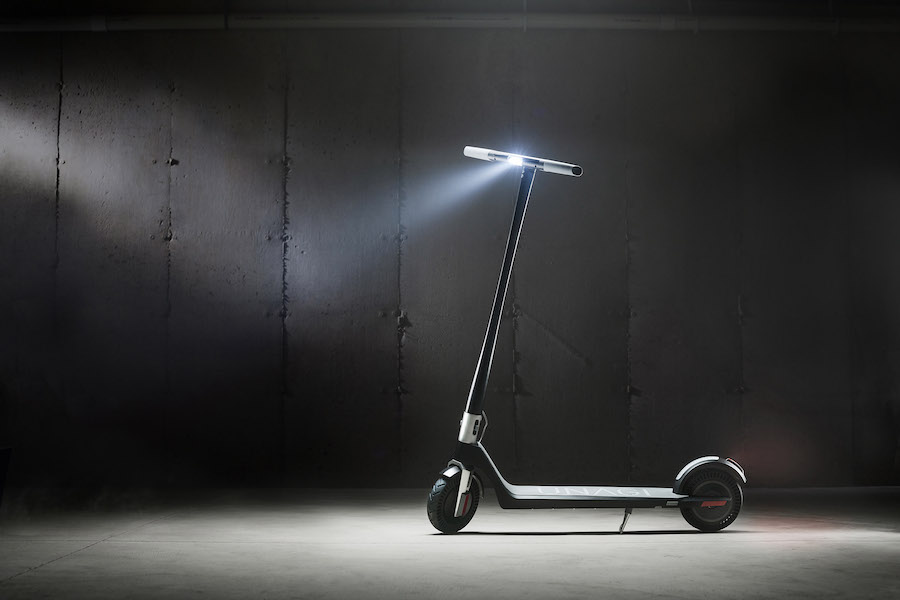
With tens of thousands of active monthly scooter members on our platform, we’ve learned that our riders value portability over all other competing features. However, many have expressed the desire for improved range without sacrificing our classic Model One’s class-leading lightweight design, said David Hyman, CEO and Founder of Unagi. “Using the latest improvements in battery cell technology, optimized motors and motor controllers, our members can finally have their cake and eat it too. And a new accompanying mobile application for smart functionality along with increased power is the icing.”
Feature comparison of Model One Voyager to Model One
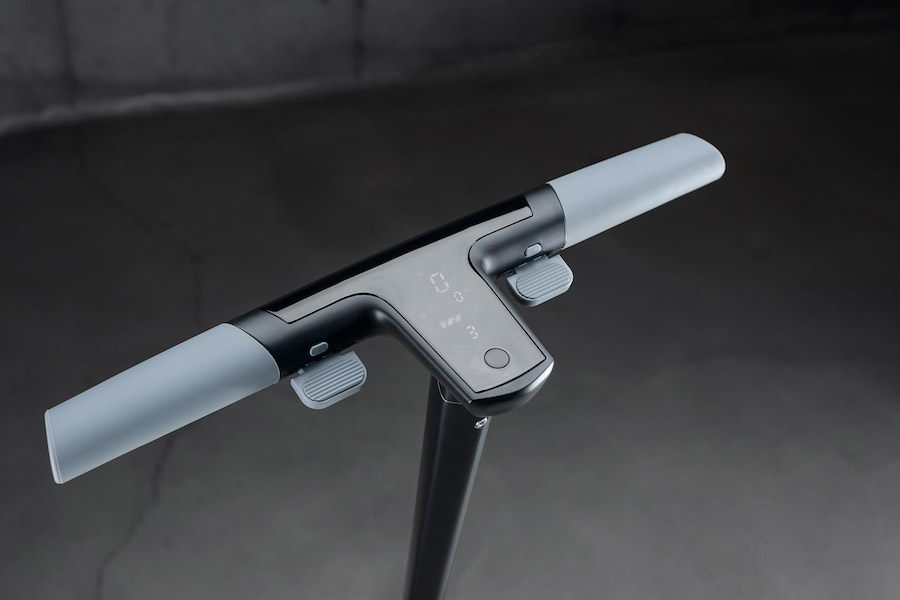
Model One Voyager
$67/month with $50 one-time set-up fee. No contract. Free shipping. Unlimited free maintenance. Includes theft insurance and color choice. If you want your own perfect scooter, this can be purchased for $1190.
Revised Model One Pricing
$55/month, including theft insurance.
Upgrading from Model One to Model One Voyager subscription
Existing subscribers can swap out their Model One for a Voyager for incremental cost of service plus $50 one time fee to cover shipping costs.
Unagi “All-Access” Subscription Service Growth
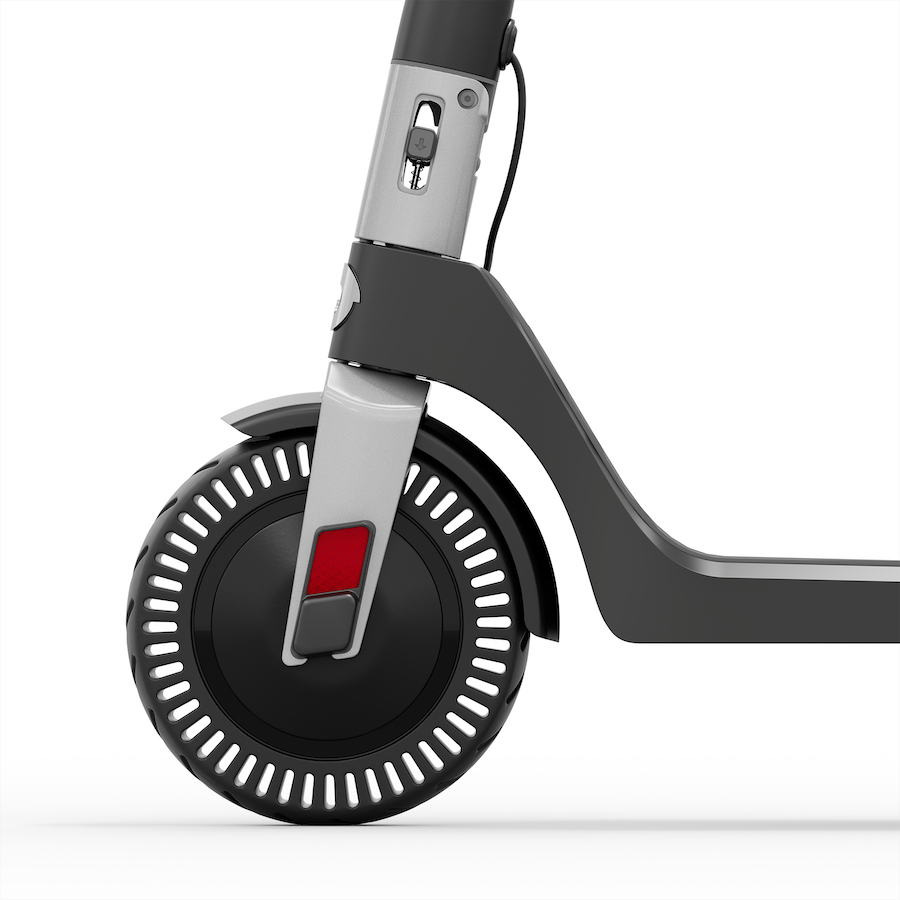
Unagi’s All-Access, no-contract, monthly subscription service has tens of thousands of members nationwide. With increased prices of ride sharing and gasoline, along with many urbanites coming back to the office, commuters are flocking to this extremely cost and time efficient option.
An e-scooter subscription is a vastly superior option to ride sharing for both employers and scooter users.
Daily ride sharing commuters are spending north of $250/month compared to Unagi’s $55/month base offering.
Unagi can keep costs low and pass savings onto subscribers because they don’t have the unit economic challenges of running hundreds of service centers, “juicers”, and prohibitively high maintenance costs for fleet management.
Unagi X Best Buy: Hardware as a Service
Unagi recently launched their first in-store retail partnership for this subscription service with Best Buy, with their own dedicated kiosk.
This is now live in San Francisco and will be expanding to more Best Buy stores this fall, along with integration into the Best Buy website.
This “hardware as a service” offering in retail is unprecedented. There have been hardware sales coupled to “software as service” offerings like Peloton, but never the hardware itself.
They have also just closed a similar partnership with PC Richards, a big box consumer electronics retailer with a large footprint on the East Coast.
Enterprise scooter subscriptions
Unagi offers an enterprise business, where employers provide Unagi scooter subscriptions to their employees as a perk. With a recent partnership with Google formally announced, Unagi have also just announced they’ve signed on the incredible software company, Unity.
Unity employees nationwide now get a free Unagi subscription courtesy of their employer. This type of green, high-utility employee perk is equal to, or of greater value than, wellness perks commonly offered.
Sunsetting the planned Indiegogo backed Model Eleven

With the strong wind in their subscription offering sails through incredible consumer adoption (Unagi’s daily subscriber count trumps their sales by 20 to one), they’ve axed the Model Eleven passion project. But, the company is keen to stress they’re not leaving their backers behind.
They’re providing three options for backers.
- A full refund.
- A 3-year All-Access subscription to the Model One Voyager, with color choice, guaranteed new scooter, and theft insurance included. Scooter arrives in November. A month prior to formal release. (Normal value of $2412)
- 2 Voyager scooters to own. Our standard 1 year warranty included. (Normal value of $2390)
“We sincerely apologize and hope our make-up offers are amenable. We’re also confident some of the technology developed for the Eleven will trickle down into products that will become available in the future.
To learn more, visit: http://www.unagiscooters.com .

Exclusive Offer – US Residents
Why buy when you can subscribe., get the new model one from $60 a month.
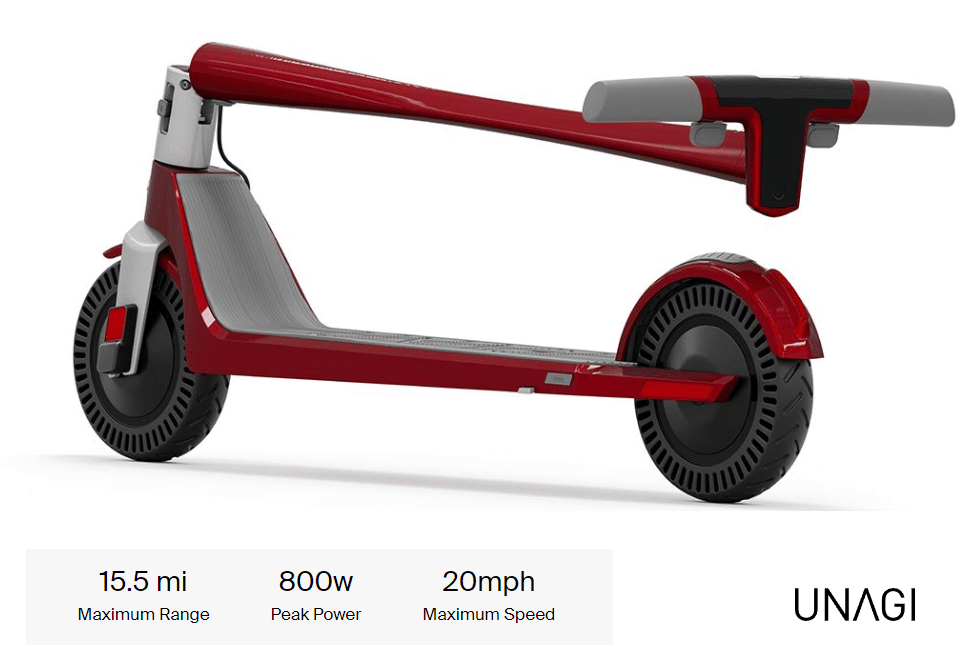

golden record
- The Contents
- The Making of
where are they now
- frequently asked questions
- Q&A with Ed Stone
0086-21-57280284 | [email protected]
Home About Us Products Join Us Partners Contact US

沪ICP备09022355号
- Staff picks
- Downloadable
- Collections
- Community members
- Sketchfab Masters
- Animals & Pets
- Architecture
- Art & Abstract
- Cars & Vehicles
- Characters & Creatures
- Cultural Heritage & History
- Electronics & Gadgets
- Fashion & Style
- Food & Drink
- Furniture & Home
- Nature & Plants
- News & Politics
- Places & Travel
- Science & Technology
- Sports & Fitness
- Weapons & Military
- Best selling
- 3D Printable
- For business Sketchfab for Teams Augmented Reality 3D Viewer 3D eCommerce 3D Configurators Find a Partner Pricing Customer Stories
Voyager 1 3D Model
The Voyager is a spacecraft that is part of the Voyager program and originally, it’s mission was to pass by Jupiter and Saturn and was going to last 4 years, but in August 2012, it has entered the interstellar space and as of June 10, it is 14 billion miles (160 AU) away from the Sun and it’s the only human-made object to reach into interstellar space. Here’s the link to the official NASA Voyager 1 website –> https://solarsystem.nasa.gov/missions/voyager-1/in-depth/ (Model not by me).
CC Attribution Creative Commons Attribution
- Science & technology 3D Models
NASA's Voyager 1 spacecraft finally phones home after 5 months of no contact
On Saturday, April 5, Voyager 1 finally "phoned home" and updated its NASA operating team about its health.

NASA's interstellar explorer Voyager 1 is finally communicating with ground control in an understandable way again. On Saturday (April 20), Voyager 1 updated ground control about its health status for the first time in 5 months. While the Voyager 1 spacecraft still isn't sending valid science data back to Earth, it is now returning usable information about the health and operating status of its onboard engineering systems.
Thirty-five years after its launch in 1977, Voyager 1 became the first human-made object to leave the solar system and enter interstellar space . It was followed out of our cosmic quarters by its space-faring sibling, Voyager 2 , six years later in 2018. Voyager 2, thankfully, is still operational and communicating well with Earth.
The two spacecraft remain the only human-made objects exploring space beyond the influence of the sun. However, on Nov. 14, 2023, after 11 years of exploring interstellar space and while sitting a staggering 15 billion miles (24 billion kilometers) from Earth, Voyager 1's binary code — computer language composed of 0s and 1s that it uses to communicate with its flight team at NASA — stopped making sense.
Related: We finally know why NASA's Voyager 1 spacecraft stopped communicating — scientists are working on a fix
In March, NASA's Voyager 1 operating team sent a digital "poke" to the spacecraft, prompting its flight data subsystem (FDS) to send a full memory readout back home.
This memory dump revealed to scientists and engineers that the "glitch" is the result of a corrupted code contained on a single chip representing around 3% of the FDS memory. The loss of this code rendered Voyager 1's science and engineering data unusable.

The NASA team can't physically repair or replace this chip, of course, but what they can do is remotely place the affected code elsewhere in the FDS memory. Though no single section of the memory is large enough to hold this code entirely, the team can slice it into sections and store these chunks separately. To do this, they will also have to adjust the relevant storage sections to ensure the addition of this corrupted code won't cause those areas to stop operating individually, or working together as a whole. In addition to this, NASA staff will also have to ensure any references to the corrupted code's location are updated.
Get the Space.com Newsletter
Breaking space news, the latest updates on rocket launches, skywatching events and more!
— Voyager 2: An iconic spacecraft that's still exploring 45 years on
— NASA's interstellar Voyager probes get software updates beamed from 12 billion miles away
— NASA Voyager 2 spacecraft extends its interstellar science mission for 3 more years
On April 18, 2024, the team began sending the code to its new location in the FDS memory. This was a painstaking process, as a radio signal takes 22.5 hours to traverse the distance between Earth and Voyager 1, and it then takes another 22.5 hours to get a signal back from the craft.
By Saturday (April 20), however, the team confirmed their modification had worked. For the first time in five months, the scientists were able to communicate with Voyager 1 and check its health. Over the next few weeks, the team will work on adjusting the rest of the FDS software and aim to recover the regions of the system that are responsible for packaging and returning vital science data from beyond the limits of the solar system.
Join our Space Forums to keep talking space on the latest missions, night sky and more! And if you have a news tip, correction or comment, let us know at: [email protected].

Robert Lea is a science journalist in the U.K. whose articles have been published in Physics World, New Scientist, Astronomy Magazine, All About Space, Newsweek and ZME Science. He also writes about science communication for Elsevier and the European Journal of Physics. Rob holds a bachelor of science degree in physics and astronomy from the U.K.’s Open University. Follow him on Twitter @sciencef1rst.
US Space Force is launching more missions than ever. Lawmakers worry America's spaceports can't keep up
China launches new mystery Shiyan satellite (video)
NASA astronauts practice 'moonwalking' in the Arizona desert (photos)
- Robb62 'V'ger must contact the creator. Reply
- Holy HannaH! Couldn't help but think that "repair" sounded extremely similar to the mechanics of DNA and the evolution of life. Reply
- Torbjorn Larsson *Applause* indeed, thanks to the Voyager teams for the hard work! Reply
- SpaceSpinner I notice that the article says that it has been in space for 35 years. Either I have gone back in time 10 years, or their AI is off by 10 years. V-*ger has been captured! Reply
Admin said: On Saturday, April 5, Voyager 1 finally "phoned home" and updated its NASA operating team about its health. The interstellar explorer is back in touch after five months of sending back nonsense data. NASA's Voyager 1 spacecraft finally phones home after 5 months of no contact : Read more
evw said: I'm incredibly grateful for the persistence and dedication of the Voyagers' teams and for the amazing accomplishments that have kept these two spacecrafts operational so many years beyond their expected lifetimes. V-1 was launched when I was 25 years young; I was nearly delirious with joy. Exploring the physical universe captivated my attention while I was in elementary school and has kept me mesmerized since. I'm very emotional writing this note, thinking about what amounts to a miracle of technology and longevity in my eyes. BRAVO!!! THANK YOU EVERYONE PAST & PRESENT!!!
- EBairead I presume it's Fortran. Well done all. Reply
SpaceSpinner said: I notice that the article says that it has been in space for 35 years. Either I have gone back in time 10 years, or their AI is off by 10 years. V-*ger has been captured!
EBairead said: I presume it's Fortran. Well done all.
- View All 13 Comments
Most Popular
- 2 Who is the 'Doctor Who' villain Maestro? And what's their relationship with the Toymaker?
- 3 Boeing's 1st Starliner astronaut launch delayed again, to May 25
- 4 India's ambitious 2nd Mars mission to include a rover, helicopter, sky crane and a supersonic parachute
- 5 Massive sunspot that brought widespread auroras to Earth now targets Mars
Voyager 1 was in crisis in interstellar space. NASA wouldn’t give up.
NASA engineers spent months doggedly trying to fix a computer on Voyager 1, a spacecraft launched in the 1970s that’s now exploring interstellar space.

For the past six months a team of engineers at NASA’s Jet Propulsion Laboratory has been trying to fix a glitchy computer. Three things make the repair job challenging:
The computer is highly customized and unlike anything on the market today.
It was built in the 1970s.
And it is 15 billion miles away.
The computer is on Voyager 1, the most distant human-made spacecraft ever launched. Far beyond the orbit of Pluto, it is riding point for all humanity as it hurtles through interstellar space.
But on Nov. 14, Voyager 1 suddenly stopped sending any data back to Earth. While it remained in radio contact, the transmission had, as NASA engineers put it, “flatlined.” So began the greatest crisis in the history of the fabled Voyager program.
Voyager 1 and its twin, Voyager 2, launched in 1977 and in the years that followed obtained stunning close-up images of Jupiter and Saturn. Voyager 2 also flew by Uranus and Neptune and is the only spacecraft to have visited those ice giants. The Voyagers blew past the heliopause, where the solar wind abates and interstellar space begins, and continued to send back science data about particles and magnetic fields in a realm never before visited.
The two Voyagers are powered by the radioactive decay of plutonium-238, and in the near future that power source will be too feeble to keep the spacecraft warm and functioning. But for now, they have operational scientific instruments that are sending back otherwise unobtainable data on the composition of space beyond the heliopause.
Fixing Voyager 1 quickly became a priority for NASA, and especially for Jeffrey Mellstrom, who has been at JPL in Pasadena for 35 years and is the chief engineer in the astronomy and physics directorate.
Mellstrom took on the challenge even as he planned for retirement in the spring. In January, Mellstrom told a colleague, “The one thing I’m going to regret is if I retire before we solve Voyager 1’s problem.”
Like kicking a vending machine
After initial attempts to resolve the issue went nowhere, JPL leadership created a “tiger team” made of a multigenerational crew of engineers, some of them veterans of the lab and some born long after the Voyagers launched.
“We didn’t know how to solve this in the beginning because we didn’t know what’s wrong,” said Mellstrom, the team’s leader.
Voyager 1 has three computers. One is the attitude and articulation control system, which makes sure the spacecraft is pointed in the right direction. Another is the command control system, which handles the commands coming from Earth. The third is the flight data subsystem, which takes science and engineering data and packages it for transmission home.
Something had gone wrong somewhere in that trio of computers. Maybe a “cosmic ray” — a particle from deep space — had smashed into a computer chip. Or maybe a piece of hardware just got so old it ceased to work.
“All we had was incoherent data, garbled data,” said Suzanne Dodd, the Voyager project manager since 2010. Dodd has been at JPL for four decades, and in her early years she wrote computer code for Voyager 2’s encounters with Uranus and Neptune. She vividly remembers that first close-up look of Neptune and an image of the ice giant with its huge moon Triton in the background.
“We didn’t know what part of the spacecraft was involved with this,” Dodd said.
So they poked it. They sent commands to Voyager 1, trying to jolt it back to coherence. The team had a list of potential failures and figured that one of the commands might have the equivalent effect of kicking a vending machine.
Here is where the troubleshooting encountered an inviolable obstacle: the speed of light. Even at 186,000 miles per second, a command sent to Voyager 1 would take 22½ hours to arrive. Then the engineers would have to wait another 22½ hours for the spacecraft to send a response.
The planet Earth is kind of a pain, too, because it spins inconveniently on its axis and moves restlessly around the sun. To communicate with distant spacecraft, NASA relies on the Deep Space Network, three arrays of huge radio telescopes in California, Spain and Australia. The idea is that, regardless of Earth’s movement, at least one array can be pointed toward a spacecraft at almost any time.
The tiger team developed a pattern of sending a command on a Friday and waiting for the return signal on Sunday. Some dark days and weeks followed.
“None of those commands that we sent were able to make any discernible difference whatsoever,” said David Cummings, an advanced flight software designer and developer.
In late February, the team sent a series of commands to prod the flight data subsystem to place software in each of 10 different “data modes.” The team waited, hoping for a breakthrough. After two days, Voyager responded — still without data. Engineer Greg Chin circulated a technical chart and summarized the situation: “So, at this time, no joy.”
“It was unbelievably depressing,” Cummings said. “Luckily the story doesn’t end there.”
Cracking the code
Just a day after the “no joy” email, the team felt a surge of optimism.
JPL has specialists in radio transmissions, and they noticed that in some “modes” the return signal from Voyager 1 had been modulated in a pattern consistent with the flight subsystem computer producing data, though not in any normal format. The modulation suggested that the processor was functioning and supported the team’s conjecture that some of the memory had been corrupted.
“That was huge,” Cummings said. “The processor was not dead.”
Painstakingly, the team at last tracked down the origin of the problem: a bad memory chip holding one bit — the smallest unit of binary data — for each of 256 contiguous words of memory.
The flight data subsystem was built with 8K memory, or more exactly 8,192 bytes. (A modern smartphone has something like 6G memory, or 6 billion bytes.)
The engineers came up with a plan: They would move the software to different parts of the flight data subsystem memory. Unfortunately they couldn’t just move the 256 words in a single batch, because there was no place roomy enough for all of it. They had to break it down into pieces. And they’d have to proofread everything. It was tedious, error-prone work.
Cummings called a young JPL flight software engineer named Armen Arslanian: “Do you want to help me relocate Voyager code?”
Arslanian was the right person for the job. Just six years out of college, he knew how to write code for spacecraft, and he knew how to deal with “assembly language,” the coding that underlies the common languages used by programmers today. That’s the language of Voyager’s 1970s-era computers.
“I ended up needing that skill,” Arslanian said.
The JPL teams had documentation from the 1970s describing the function of the software, but often the descriptions were contingent on other information that could not be found. The team also lacked the tools to verify their coding. They had to do everything essentially by hand. It wasn’t like trying to find a needle in a haystack so much as like trying to examine every piece of hay for possible flaws.
The team prioritized the software for the engineering data so that they could fully restore communication with the spacecraft. If that worked, they could fix the science data later.
On April 18, the team sent a package of commands to the spacecraft and then waited. Two days later the spacecraft sent back the first intelligible engineering data in more than five months.
There is more work to be done, but the end is in sight. The engineers are still working on transferring the code that controls the scientific data. But they know how to do this. They found the problem, figured out the workaround and are just grinding through the code transfer.
Mellstrom and Dodd are fully confident that Voyager 1 has been saved. Mellstrom said he can retire without regret.
“The spacecraft is working,” Dodd said. “Go Voyager!”
An earlier version of this story incorrectly said Jeffrey Mellstrom and Suzanne Dodd are married. They are married to other people. This story has been corrected.

For IEEE Members
Ieee spectrum, follow ieee spectrum, support ieee spectrum, enjoy more free content and benefits by creating an account, saving articles to read later requires an ieee spectrum account, the institute content is only available for members, downloading full pdf issues is exclusive for ieee members, downloading this e-book is exclusive for ieee members, access to spectrum 's digital edition is exclusive for ieee members, following topics is a feature exclusive for ieee members, adding your response to an article requires an ieee spectrum account, create an account to access more content and features on ieee spectrum , including the ability to save articles to read later, download spectrum collections, and participate in conversations with readers and editors. for more exclusive content and features, consider joining ieee ., join the world’s largest professional organization devoted to engineering and applied sciences and get access to all of spectrum’s articles, archives, pdf downloads, and other benefits. learn more →, join the world’s largest professional organization devoted to engineering and applied sciences and get access to this e-book plus all of ieee spectrum’s articles, archives, pdf downloads, and other benefits. learn more →, access thousands of articles — completely free, create an account and get exclusive content and features: save articles, download collections, and talk to tech insiders — all free for full access and benefits, join ieee as a paying member., how nasa is hacking voyager 1 back to life, engineers found space in the geriatric spacecraft’s memory to deal with a stuck bit.

Voyager 1 whizzes through interstellar space at 17 kilometers per second.
On 14 November 2023, NASA’s interstellar space probe Voyager 1 began sending gibberish back to Earth. For five months, the spacecraft transmitted unusable data equivalent to a dial tone.
In March, engineers discovered the cause of the communication snafu: a stuck bit in one of the chips comprising part of Voyager’s onboard memory. The chip contained lines of code used by the flight data subsystem (FDS), one of three computers aboard the spacecraft and the one that is responsible for collecting and packaging data before sending it back to Earth.
JPL engineers sent a command through the Deep Space Network on 18 April to relocate the affected section of code to another part of the spacecraft’s memory, hoping to fix the glitch in the archaic computer system. Roughly 22.5 hours later, the radio signal reached Voyager in interstellar space, and by the following day it was clear the command had worked. Voyager began returning useful data again on 20 April.
NASA engineers managed to diagnose and repair Voyager 1 from 24 billion kilometers away—all while working within the constraints of the vintage technology. “We had some people left that we could rely on [who] could remember working on bits of the hardware,” says project scientist Linda Spilker . “But a lot of it was going back through old memos, like an archeological dig to try and find information on the best way to proceed.”
Minuscule Memory
Voyager 1 and its twin, Voyager 2—which also remains operational—were launched nearly 50 years ago, in 1977, to tour the solar system. Both spacecraft far surpassed their original missions of visiting Jupiter and Saturn, and in 2012, entered interstellar space .
“That mission literally rewrote the textbooks on the solar system,” says Jim Bell , a planetary scientist at Arizona State University and author of a book recounting 40 years of the mission. “We’ve never sent anything out that far, so every bit of data they send back is new.” The 1960s and 1970s technology, on the other hand, is now ancient.
Decades after the tech went out of vogue, the FDS still uses assembly language and 16-bit words . “These are two positively geriatric spacecraft,” says Todd Barber , a propulsion engineer for Voyager. Working to fix the issues, he says, is “like palliative care.”
To first diagnose the issue, NASA’s engineers first tried turning on and off different instruments, says Spilker. When that proved unsuccessful, they initiated a full memory readout of the FDS. “That’s what led to us finding that piece of hardware that had failed and that 256-bit chunk of memory,” she says. In one chip, the engineers found a stuck bit, fixed at the same binary value. It became clear that the chip was irreparable, so the team had to identify and relocate the affected code.
However, no single location was large enough to accommodate the extra 256 bits. “The size of the memory was the biggest challenge in this anomaly,” says Spilker. Voyager’s computers each have a mere 69.63 kilobytes of memory.
To begin fixing the issue, the team searched for corners of Voyager’s memory to place segments of code that would allow for the return of engineering data, which includes information about the status of science instruments and the spacecraft itself. One way the engineers freed up extra space was by identifying processes no longer used. For example, Voyager was programmed with several data modes—the rate at which data is sent back to Earth—because the spacecraft could transmit data much faster when it was closer to Earth. At Jupiter, the spacecraft transmitted data at 115.2 kilobits per second; now, that rate has slowed to 40 bits per second, and faster modes can be overwritten. However, the engineers have to be careful to ensure they don’t delete code that is used by multiple data modes.
Having successfully returned engineering data, the team is working to relocate the rest of the affected code in the coming weeks. “We’re having to look a little harder to find the space and make some key decisions about what to overwrite,” says Spilker. When their work is completed, the Voyager team hopes to return new science data, though unfortunately, all data from the anomaly period was lost.
Built to Last
The cause of the stuck bit is a mystery, but it’s likely the chip either wore out with age or was hit by a highly energetic particle from a cosmic ray. Having entered interstellar space, “Voyager is out bathed in the cosmic rays,” Spilker says. Luckily, the spacecraft was built to take it, with its electronic components shielded from the large amount of radiation present at Jupiter. “That’s serving us quite well now in the interstellar medium.”
When Voyager was built, the 12-year trip to Uranus and Neptune alone was a “seemingly impossible goal for a 1977 launch,” says Barber. The longevity of Voyager is a testament of its engineering, which accounted for many contingencies and added redundancy. The mission also included several firsts, for example, as the first spacecraft with computers able to hold data temporarily using volatile CMOS memory. (An 8-track digital tape recorder onboard stores data when collected at a high rate.)
Importantly, it was also the first mission with a reprogrammable computer. “We take it for granted now,” Bell says, but before Voyager, it wasn’t possible to adjust software in-flight. This capability proved essential when the mission was extended, as well as when issues arise.
Going forward, the Voyager team expects to encounter additional problems in the aging spacecraft—though they hope to make it to the 50-year anniversary before the next one. “With each anomaly, we just learn more about how to work with the spacecraft and are just amazed at the capabilities that the engineers built into it using that 1960s and ’70s technology,” Spilker says. “It’s just amazing.”
- 50 Years Later, This Apollo-Era Antenna Still Talks to Voyager 2 ›
- Voyager 1 Hasn't Really Left The Solar System, But That's OK ›
- Mission Status - Voyager ›
- Voyager 1 ›
Gwendolyn Rak is a contributor to IEEE Spectrum with interests in biotechnology and aerospace. She holds a master’s degree in science journalism from New York University.
I worked with COSMAC and similar rudimentary processors in the early 70’s so was curious to learn how they solved this problem. The nearest it got was “they initiated a full memory readout of the FDS.” But if the telemetry was faulty how did the get the readout?
Corporate Training Programs Can Be IEEE Certified
Hydrogen storage could slash renewables’ costs, high-speed rail finally coming to the u.s., related stories, satellite radar sharpens ukraine dam collapse questions, the most hackable handheld ham radio yet, faster, more secure photonic chip boosts ai training.
Voyager 1: A Trailblazer in Space Exploration
Voyager 1, the first satellite launched into space, makes history..

Voyager 1 holds a special place in the annals of space exploration. Launched by NASA on September 5, 1977, Voyager 1 became the first satellite to venture into the depths of outer space. Its primary mission was to study Jupiter and Saturn, but it ended up exceeding all expectations by traveling farther than any other space probe in history.
One of the most noteworthy aspects of Voyager 1 is its incredible longevity. Despite being launched over four decades ago, the spacecraft is still operational and continues to send back valuable data to Earth. Its journey has taken it beyond the outer reaches of our solar system, making it the farthest-reaching man-made object in existence.
The construction of Voyager 1 was a collaborative effort involving not just NASA, but also other nations. Scientists and engineers from around the world worked together to design and build the spacecraft, ensuring that it would be capable of enduring the harsh conditions of space and transmitting data back to Earth.
Voyager 1's most famous moment came in 2012, when it officially crossed into interstellar space, becoming the first human-made object to leave our solar system. This historic milestone solidified Voyager 1's place in the pantheon of space exploration, forever cementing its legacy as a trailblazer in the field.
The data collected by Voyager 1 has provided invaluable insights into the outer planets of our solar system, as well as the environment of space itself. Scientists have used this data to further their understanding of planetary atmospheres, magnetic fields, and radiation levels, shedding light on the mysteries of the cosmos.
In addition to its scientific achievements, Voyager 1 has also captured the imagination of the public. Its iconic Golden Record, containing sounds and images from Earth, serves as a time capsule for future civilizations, showcasing the diversity and creativity of our species.
The ongoing success of Voyager 1 is a testament to the ingenuity and perseverance of the team that designed and built the spacecraft. Despite the passage of time, Voyager 1 continues to push the boundaries of human exploration, inspiring generations to dream of what lies beyond our own planet.
- MARKETPLACE
Voyager 1, 15 billion miles from Earth, talking to NASA again
For the past six months a team of engineers at NASA’s Jet Propulsion Laboratory has been trying to fix a glitchy computer. Three things make the repair job challenging:
The computer is highly customized and unlike anything on the market today.
It was built in the 1970s.
And it is 15 billion miles away.
The computer is on Voyager 1, the most distant human-made spacecraft ever launched. Far beyond the orbit of Pluto, it is riding point for all humanity as it hurtles through interstellar space.
But on Nov. 14, Voyager 1 suddenly stopped sending any data back to Earth. While it remained in radio contact, the transmission had, as NASA engineers put it, “flatlined.” So began the greatest crisis in the history of the fabled Voyager program.
Voyager 1 and its twin, Voyager 2, launched in 1977 and in the years that followed obtained stunning close-up images of Jupiter and Saturn. Voyager 2 also flew by Uranus and Neptune and is the only spacecraft to have visited those ice giants. The Voyagers blew past the heliopause, where the solar wind abates and interstellar space begins, and continued to send back science data about particles and magnetic fields in a realm never before visited.
The two Voyagers are powered by the radioactive decay of plutonium-238, and in the near future that power source will be too feeble to keep the spacecraft warm and functioning. But for now, they have operational scientific instruments that are sending back otherwise unobtainable data on the composition of space beyond the heliopause.
Fixing Voyager 1 quickly became a priority for NASA, and especially for Jeffrey Mellstrom, who has been at JPL in Pasadena for 35 years and is the chief engineer in the astronomy and physics directorate.
Mellstrom took on the challenge even as he planned for retirement in the spring. In January, Mellstrom told a colleague, “The one thing I’m going to regret is if I retire before we solve Voyager 1’s problem.”
Like kicking a vending machine
After initial attempts to resolve the issue went nowhere, JPL leadership created a “tiger team” made of a multigenerational crew of engineers, some of them veterans of the lab and some born long after the Voyagers launched.
“We didn’t know how to solve this in the beginning because we didn’t know what’s wrong,” said Mellstrom, the team’s leader.
Voyager 1 has three computers. One is the attitude and articulation control system, which makes sure the spacecraft is pointed in the right direction. Another is the command control system, which handles the commands coming from Earth. The third is the flight data subsystem, which takes science and engineering data and packages it for transmission home.
Something had gone wrong somewhere in that trio of computers. Maybe a “cosmic ray” - a particle from deep space - had smashed into a computer chip. Or maybe a piece of hardware just got so old it ceased to work.
“All we had was incoherent data, garbled data,” said Suzanne Dodd, the Voyager project manager since 2010. Dodd has been at JPL for four decades, and in her early years she wrote computer code for Voyager 2’s encounters with Uranus and Neptune. She vividly remembers that first close-up look of Neptune and an image of the ice giant with its huge moon Triton in the background.
“We didn’t know what part of the spacecraft was involved with this,” Dodd said.
So they poked it. They sent commands to Voyager 1, trying to jolt it back to coherence. The team had a list of potential failures and figured that one of the commands might have the equivalent effect of kicking a vending machine.
Here is where the troubleshooting encountered an inviolable obstacle: the speed of light. Even at 186,000 miles per second, a command sent to Voyager 1 would take 22½ hours to arrive. Then the engineers would have to wait another 22½ hours for the spacecraft to send a response.
The planet Earth is kind of a pain, too, because it spins inconveniently on its axis and moves restlessly around the sun. To communicate with distant spacecraft, NASA relies on the Deep Space Network, three arrays of huge radio telescopes in California, Spain and Australia. The idea is that, regardless of Earth’s movement, at least one array can be pointed toward a spacecraft at almost any time.
The tiger team developed a pattern of sending a command on a Friday and waiting for the return signal on Sunday. Some dark days and weeks followed.
“None of those commands that we sent were able to make any discernible difference whatsoever,” said David Cummings, an advanced flight software designer and developer.
In late February, the team sent a series of commands to prod the flight data subsystem to place software in each of 10 different “data modes.” The team waited, hoping for a breakthrough. After two days, Voyager responded - still without data. Engineer Greg Chin circulated a technical chart and summarized the situation: “So, at this time, no joy.”
“It was unbelievably depressing,” Cummings said. “Luckily the story doesn’t end there.”
Cracking the code
Just a day after the “no joy” email, the team felt a surge of optimism.
JPL has specialists in radio transmissions, and they noticed that in some “modes” the return signal from Voyager 1 had been modulated in a pattern consistent with the flight subsystem computer producing data, though not in any normal format. The modulation suggested that the processor was functioning and supported the team’s conjecture that some of the memory had been corrupted.
“That was huge,” Cummings said. “The processor was not dead.”
Painstakingly, the team at last tracked down the origin of the problem: a bad memory chip holding one bit - the smallest unit of binary data - for each of 256 contiguous words of memory.
The flight data subsystem was built with 8K memory, or more exactly 8,192 bytes. (A byte is eight bits, and a modern smartphone has something like 6G memory, or 6 billion bytes.)
The engineers came up with a plan: They would move the software to different parts of the flight data subsystem memory. Unfortunately they couldn’t just move the 256 words in a single batch, because there was no place roomy enough for all of it. They had to break it down into pieces. And they’d have to proofread everything. It was tedious, error-prone work.
Cummings called a young JPL flight software engineer named Armen Arslanian: “Do you want to help me relocate Voyager code?”
Arslanian was the right person for the job. Just six years out of college, he knew how to write code for spacecraft, and he knew how to deal with “assembly language,” the coding that underlies the common languages used by programmers today. That’s the language of Voyager’s 1970s-era computers.
“I ended up needing that skill,” Arslanian said.
The JPL teams had documentation from the 1970s describing the function of the software, but often the descriptions were contingent on other information that could not be found. The team also lacked the tools to verify their coding. They had to do everything essentially by hand. It wasn’t like trying to find a needle in a haystack so much as like trying to examine every piece of hay for possible flaws.
The team prioritized the software for the engineering data so that they could fully restore communication with the spacecraft. If that worked, they could fix the science data later.
On April 18, the team sent a package of commands to the spacecraft and then waited. Two days later the spacecraft sent back the first intelligible engineering data in more than five months.
There is more work to be done, but the end is in sight. The engineers are still working on transferring the code that controls the scientific data. But they know how to do this. They found the problem, figured out the workaround and are just grinding through the code transfer.
Mellstrom and Dodd are fully confident that Voyager 1 has been saved. Mellstrom said he can retire without regret.
“The spacecraft is working,” Dodd said. “Go Voyager!”
NRA endorses Trump as he vows to protect gun rights 07:41 pm
Ukraine's mobilization law comes into force as new Russian push strains troops 07:40 pm
Giuliani served Ariz. indictment papers for election scheme during 80th birthday party 07:33 pm
Trump campaigns in Minn., predicts he will win traditionally Democratic state in November 10:54 pm
Israeli army finds bodies of 3 hostages in Gaza killed at Oct. 7 music festival 06:37 pm
Namdar says it could sell or redevelop Crystal Mall
Westerly woman found guilty of repeatedly punching a child, throwing another across a room
Waterford data center opponents urge NRC to step in, block proposal
UPDATED: Montville man charged with attempting to solicit sex acts from girls
Man extricated from JCPenney escalator in weekend mishap at Crystal Mall
An altar boy in Newport, Rhode Island
Bee rescuer patrick gaudin, reporting on church sex abuse cases for over 20 years, dictionary researcher joshua pendragon, providing victims of church abuse some justice and accountability.

IMAGES
VIDEO
COMMENTS
Model One Voyager sets a new bar for excellence in electric micromobility. Voyager sprints off the starting line with 25% faster acceleration than the Model One Classic - but it has the stamina to run a marathon, boasting double the maximum range and half the charge time vs Classic.
The Model One Voyager was initially available to order as of April 1, 2023, and was originally scheduled to ship at the end of that month; however, it's been delayed by nearly a year, and now is ...
Unagi's subscription model is starting to take off, and the company is adding a new model to entice new subscribers: the Model One Voyager, which users can get for $67 a month.
The new Unagi Model One Voyager electric scooter maintains the classy looks we've come to expect from Unagi, yet packs in better performance for an even more impressive ride. Don't get me ...
5 / 5. Performance. It's incredibly responsive but its lack of suspension and shock absorption holds it back a lot. 4 / 5. Avarage rating. The Unagi Model One Voyager is a fantastic premium e ...
Model One Voyager differs from its earlier model in a few important ways. The range goes from 12 to 20 miles, while adding less than a pound of weight. The Voyager also adds a bunch of smartphone ...
The Unagi Model One Voyager ($1,190 https://unagiscooters.com/) is the latest premium electric scooter from Unagi. Read all about my experience testing it ou...
Unagi's latest electric scooter, the Model One Voyager, combines convenience and a trusty companion app to make a compelling case for subscription-based electric two-wheelers.
The Unagi Model One Voyager is powered by dual 250 watt motors, capable of 500 watts each for a total of 1000 watts of power. This is an additional 200 Watts of total power over their classic model. I felt comfortable riding flat-level terrain with a single motor, but the additional motor is there when you are in a hurry or climbing lots of ...
Today we're looking at the Model One Voyager, the latest scooter from one of the coolest scooter makers, and the only company to offer their scooters by mont...
The Voyager (and original model one) really are great scooters though, and I can confidently recommend the rental program. Buying these scooters outright is a tough sell , but the rental program is one of a kind, fairly priced, and echoes the ease of use and low maintenance features that the Voyager prioritizes.
A 3-year All-Access subscription to the Model One Voyager, with color choice, guaranteed new scooter, and theft insurance included. Scooter arrives in November. A month prior to formal release. (Normal value of $2412) 2 Voyager scooters to own. Our standard 1 year warranty included. (Normal value of $2390)
Overview. The Cover. The Contents. The Making of. Galleries. Videos. Making of the Golden Record. Images on the Golden Record. Galleries of Images Voyager Took.
Welcome to the Unagi Model One Voyager Complete Set-Up Guide! In this video, we walk you through everything you need to know to get your Unagi scooter up and...
USDZ File (3D Model) (usdz) (1.17 MB) NASA explores the unknown in air and space, innovates for the benefit of humanity, and inspires the world through discovery. A 3D model of NASA's twin Voyager spacecraft.
Modeller can easy do finish the upbuild Model, the production is simple and easy to stick and easy to bend, only need 5 to 10 minutes. Hope you have a enjoy time! ... 2024/1/15 - - 2023/12/15 New Products - - 35 : PE351245 : WWII German Jagdpanzer IV/70(A) ZWISCHEN LOSUNG Fenders(For DRAGON) 2023/12/15 : 35 :
Voyager 1 has been exploring our solar system for more than 45 years. The probe is now in interstellar space, the region outside the heliopause, or the bubble of energetic particles and magnetic fields from the Sun. Voyager 1 is the first human-made object to venture into interstellar space. Voyager 1 discovered a thin ring around Jupiter and ...
4. Download 3D Model. Triangles: 20.4k. Vertices: 13.6k. More model information. The Voyager is a spacecraft that is part of the Voyager program and originally, it's mission was to pass by Jupiter and Saturn and was going to last 4 years, but in August 2012, it has entered the interstellar space and as of June 10, it is 14 billion miles (160 ...
On Saturday, April 5, Voyager 1 finally "phoned home" and updated its NASA operating team about its health. The interstellar explorer is back in touch after five months of sending back nonsense data.
An illustration depicts NASA's Voyager 1 spacecraft traveling through interstellar space, which it entered in 2012. (NASA/JPL-Caltech) 8 min. For the past six months a team of engineers at NASA ...
On 14 November 2023, NASA's interstellar space probe Voyager 1 began sending gibberish back to Earth. For five months, the spacecraft transmitted unusable data equivalent to a dial tone. In ...
NASA's Voyager 1 Spacecraft Has Resumed Communications With Earth From 15 Billion Miles Away. An artist's vision of Voyager 1. (Photo: NASA/JPL-Caltech) Since 1977, Voyager 1 has been wandering the corners of our universe. Launched by NASA on a mission to learn more, the craft swung by Saturn in 1980, captured a "solar system family ...
Voyager 1 holds a special place in the annals of space exploration. Launched by NASA on September 5, 1977, Voyager 1 became the first satellite to venture into the depths of outer space. Its primary mission was to study Jupiter and Saturn, but it ended up exceeding all expectations by traveling farther than any other space probe in history. ...
This illustration provided by NASA depicts Voyager 1. The most distant spacecraft from Earth stopped sending back understandable data in November 2023.